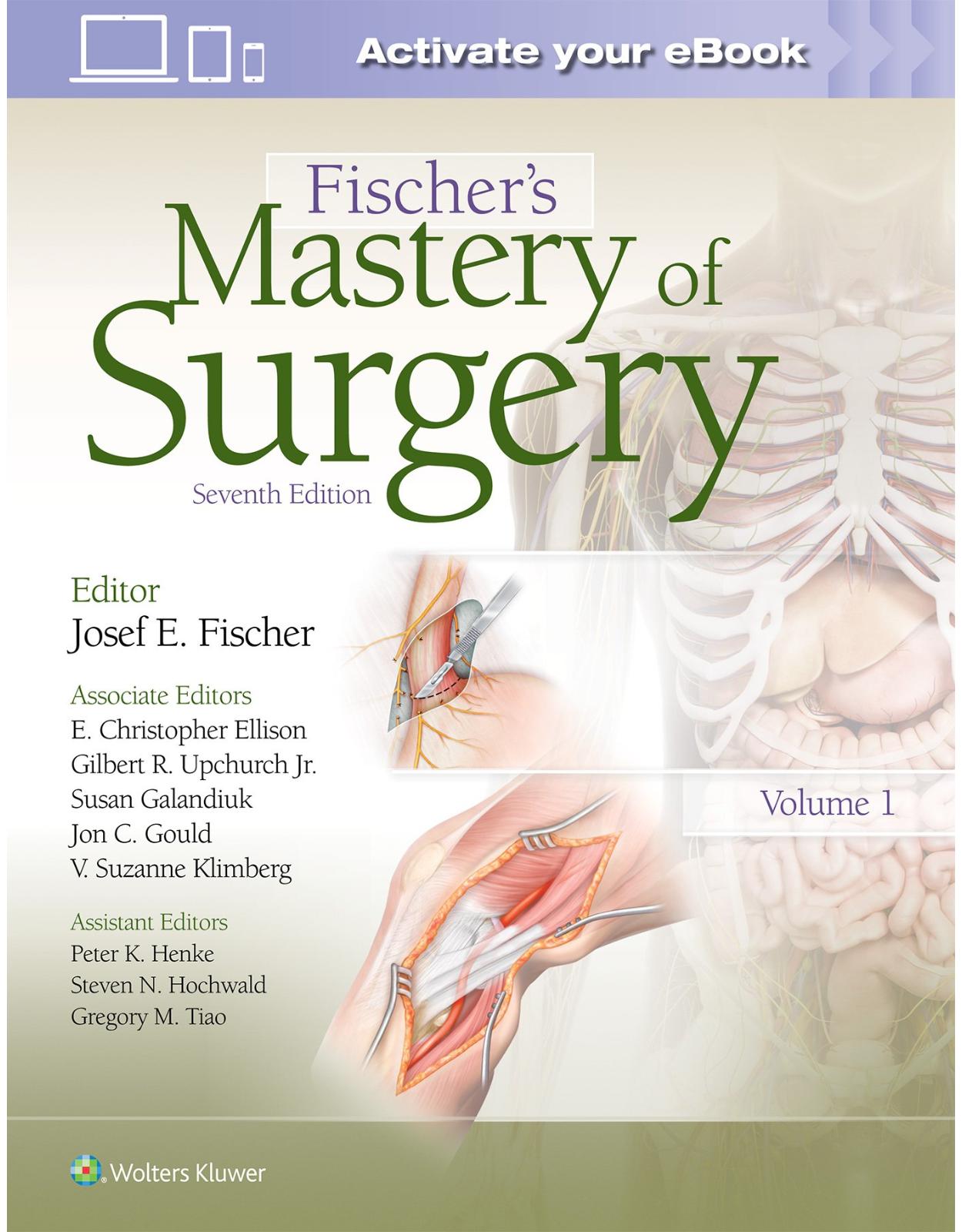
Fischer’s Mastery of Surgery, 7e
Produs indisponibil momentan. Pentru comenzi va rugam trimiteti mail la adresa depozit2@prior.ro sau contactati-ne la numarul de telefon 021 210 89 28 Vedeti mai jos alte produse similare disponibile.
Disponibilitate: Acest produs nu este momentan in stoc
Autor: Josef Fischer
Editura: LWW
Limba: Engleza
Nr. pagini: 2856
Coperta: Hardback
Dimensiuni: 23.5 x 14 x 29.8 cm
An aparitie: 2018
Description:
Here are the core procedures every general surgeon needs to master, in step-by-step detail with commentary from experts in the field. In two full-color volumes, Fischer’s Mastery of Surgery, Seventh Edition includes the essentials of diagnosis, anatomy, and pre-operative planning while maintaining a focus on clear, step-by-step depictions and descriptions of procedures. This thoroughly revised edition brings you up to date with evidence-based approaches for virtually any surgery you’ll be called upon to perform.
Your book purchase includes a complimentary download of the enhanced digital version for iOS, Android, PC & Mac.
Take advantage of these practical features that will improve your digital experience:
The ability to download the digital on multiple devices at one time — providing a seamless reading experience online or offline
Powerful search tools and smart navigation cross-links that allow you to search within this book, or across your entire library of VitalSource eBooks
Multiple viewing options that enable you to scale images and text to any size without losing page clarity as well as responsive design
The ability to highlight text and add notes with one click.
Table of Contents:
SECTION I Perioperative Care of the Surgical Patient
Chapter 1 Metabolic and Inflammatory Responses to Trauma and Infection
Introduction
Overview
Inflammatory Response
The Neuro-Immune Axis
Metabolic Alterations
Suggested Readings
Chapter 2 Perioperative Management: Practical Principles, Molecular Basis of Risk, and Future Directions
Introduction
Screening Tests in Generally Healthy Patients
Risk Assessment and Management in Patients with Chronic Medical Illness
Preoperative Behavioral Modification
Medication Management
Preoperative Specialty Consultation
Risk Reduction in the Immediate Perioperative Period
Surgical Checklist and Preoperative Timeout
Prevention of Deep Venous Thrombosis
Postoperative Ileus Prevention
Wound Infection
Intraoperative Resuscitation, Ventilation, and Temperature Management
Postoperative Risk Minimization
Clinical Pathways and Handoffs
Postoperative Monitoring and Management of Chronic Medical Illnesses
Early Mobilization
Introduction
Muscle Wasting in Surgical Patients
Clinical Consequences of Muscle Wasting
Acute Quadriplegic Myopathy
Diagnosis of Muscle Wasting
Mechanisms of Muscle Wasting
Proteolytic Mechanisms Involved in Muscle Breakdown
Transcription Factors and Muscle Wasting
Nuclear Cofactors and Muscle Wasting
Prevention and Treatment of Muscle Wasting
Ambulation and Exercise
Nutritional Intervention
Hormonal Treatment
Biologic Treatment
The Role of Albumin Measurement in Nutritional Support
Risk of Catheter-Related Blood Stream Infection
What is Needed for Total Energy Requirement
Caloric Requirements and the Calorie to Nitrogen Ratio
Patient Selection for TPN
General Indications for TPN
Placing a Central Venous Catheter
Suspected CLABSI
TPN Solutions
Management of TPN During Operation
Relationship Between TPN and Enteral Nutrition
Hepatic Failure
Renal Failure
Respiratory Failure
Cardiac Failure
Glutamine
Immunologically Active Solutions
Complications
Conclusion
Suggested Readings
Chapter 3 Enteral Nutrition Support
Introduction
Nutrition Assessment
Biochemical Assessment
Metabolic Alterations Following Insult
Energy and Protein Requirements
Macronutrients: Absorption and Utilization
Enteral Nutrition
Disease-Specific Formulations and Additives
Enteral Feeding Complications
Special Considerations in the Elective Perioperative Setting
Summary
Suggested Readings
Chapter 4 Cardiovascular Monitoring and Support
Physical Findings
Central Venous Catheters
Pulmonary Artery Catheters
Transesophageal Echocardiography
Cardiovascular Support
Inotropic Agents
Vasodilators
Vasopressors
Intra-Aortic Balloon Counterpulsation
Cardiovascular Risk
Suggested Readings
Chapter 5 Pulmonary Risk and Ventilatory Support
Introduction
Anatomy and Physiology
Pulmonary Mechanics and Lung Volumes
Preoperative Assessment
Preoperative Assessment of Pulmonary Risk
Prophylaxis for Venous Thromboembolism and Pulmonary Embolism
Diagnosis and Management of Ventilator-Associated Pneumonia
Pathophysiology and Treatment of Acute Respiratory Distress Syndrome
Intraoperative Ventilatory Support
Postoperative Ventilatory Support
Liberation from Mechanical Ventilation
Airway Management
Management Strategies for Retained Hemothorax and Empyema
Suggested Readings
Chapter 6 Hemorrhagic Risk and Blood Components
Introduction
Disseminated Intravascular Coagulation
Acute Traumatic Coagulopathy
Dilutional Coagulopathy
Inherited Coagulopathies
Coagulopathy of Liver Disease
Drug-Induced Coagulopathy and Reversal
Evaluation of Bleeding Risk
Packed Red Blood Cells
Fresh Frozen Plasma
Prothrombin Complex Concentrate
Platelets
Cryoprecipitate
Tranexamic Acid
Recombinant Factor VIIa
Desmopressin
Complications of Transfusion
Summary
Suggested Readings
Chapter 7 Perioperative Antimicrobial Prophylaxis and Treatment of Surgical Infection
Introduction
Principles of Prevention of Surgical Site Infection
Preoperative Antimicrobial Prophylaxis
Antimicrobial Stewardship
Guidelines on Prevention of Surgical Site Infection
Treatment of Surgical Infection
Conclusion
Suggested Readings
Chapter 8 Multiple Organ Dysfunction Syndrome: Prevention and Clinical Management
Etiology and Pathophysiology
Management Strategies
Surgical Technique
Postoperative Care
Outcomes
Suggested Readings
Chapter 9 Immunosuppression in Organ Transplantation
Immune Recognition and Rejection
Rejection
Immunosuppression
Conclusions
Suggested Readings
Chapter 10 Surgeons and the Opioid Epidemic
Introduction
Brief History of Opioids
A Revolution in Pharmaceutical Advertising
Misconstrued Science
Paradigm Change
A Rapid Increase in Prescription Opioids
A Middle-America Problem
Opioids and the Surgeon
Approaches to Prevention
Approaches to Addiction Treatment
Harm Reductions Strategies
Multimodality Addiction Strategies
Maintaining Abstinence
Final Discussion
Conclusion
Acknowledgments
Suggested Readings
SECTION II Basic Surgical Skills: New and Emerging Technology
Chapter 11 Ventral Abdominal Hernia: Open and Minimally Invasive and Component Separation Release
Abdominal Wall Incisions
Types of Incisions
Selection of the Incision
Closure of the Incision
Intra-Abdominal Hypertension and Abdominal Compartment Syndrome
Open Ventral Hernia Repair Including Component Release
Patient Selection
Approach (Open or Laparoscopic)
Choice of Mesh Material
Location of Mesh Placement
Specific Hernias
Incisional Hernias
Types of Repairs
Component Separation
Laparoscopic Ventral Hernia Repair
Special Considerations
Outcomes
Summary
Suggested Readings
Chapter 12 Laparoscopic Suturing and Stapling
Background
Loop Ligature
Suturing Instrumentation
Extracorporeal KNOT
Intracorporeal KNOT
Mechanical Suturing Deivces
Laparoscopic Suturing Simulation and Training
Stapling in Laparoscopy
Conclusions
Suggested Readings
Chapter 13 Ultrasonography by Surgeons
Indications for Intraoperative Ultrasound
Basic Physics: The Piezoelectric Effect
Instrumentation
Scanning Techniques
Open Intraoperative Ultrasound
Laparoscopic Ultrasound
Ultrasound-Guided Procedures
Training in Surgical Ultrasound
Conclusions
Suggested Readings
Chapter 14 Tumor Ablation: Technologies and Clinical Applications
Introduction
Potential Benefits of Tumor Ablation
Technologies used for Tumor Ablation
Tumor Ablation in Clinical Practice
Conclusions
Suggested Readings
Chapter 15 Upper and Lower Gastrointestinal Endoscopy
Introduction
Indications and Contraindications for Digestive Endoscopy
Instrumentation
Advanced Imaging in Endoscopy
Conclusion
Suggested Readings
Chapter 16 Soft Tissue Reconstruction with Flap Techniques
Introduction
General Principles for Coverage of Soft Tissue Wounds
Soft Tissue Flap Techniques
Suggested Readings
Chapter 17 Hand Surgery: Traumatic and Infectious Emergencies
Introduction
High-Yield Hand, Wrist And Forearm Anatomy
Clinical Presentation and Hand Examination
Preoperative Planning and Management of Hand Trauma Patients
Vascular Compromise: Amputation, Replantation, and Revascularization
Emergent Infections: Flexor Tenosynovitis, Septic Arthritis, Deep Space Infections
High-Pressure Injections
Compartment Syndromes
References
Chapter 18 Robotic Surgery
Introduction
Robotic Platforms and Evolution
Equipment and Setup Fundamentals
Robotic System Summary
General Surgery
Conclusion
Suggested Readings
Chapter 19 Surgical Energy
Introduction
Types of Energy in the Operating Room
The Eight Reproducible Patterns of Electrosurgical Injury
Special Considerations
Conclusion
Suggested Readings
SECTION III The Head and Neck
Chapter 20 Anatomy of the Head and Neck
Surface Anatomy
Structure of the Neck
Root of the Neck
Triangles of the Neck
Viscera of the Neck
Superficial Venous System
Lymphatic Pathways of the Neck
Suggested Readings
Chapter 21 Surgery of the Major Salivary Glands
Introduction
Anatomy
Clinical, Radiologic, and Pathologic Evaluation
Indications for Surgery
Surgical Technique
Submandibular Triangle Dissection
Revision Surgery
Suggested Readings
Chapter 22 Anatomy of the Parotid Gland, Submandibular Triangle, and Floor of the Mouth
Anatomy of the Parotid Gland
Anatomy of the Suprahyoid Portion of the Anterior Triangle
Anatomy of the Submandibular Triangle
Anatomy of the Submental Triangle
Anatomy of the Floor of the Mouth
Suggested Readings
Chapter 23 Lip Reconstruction
Anatomy
Reconstruction of Lip Defects
Principles of Lip Reconstruction
Vermillion Defects and Premalignant Lesions
Upper Lip Defect Less than 30% of Lip Length
Lower Lip Defect Less than 30% of Lip Length
Upper Lip Defect from 30% to 60% of Lip Length
Lower Lip Defect from 30% to 60% of Lip Length
Upper or Lower Lip Defects Greater than 66%
Summary
Suggested Readings
Chapter 24 Surgery for Cancer of the Oral Cavity
Incidence, Mortality, and Etiology
Anatomy and Clinical Presentation
Staging and Diagnostic Work-Up
Treatment
Site-Specific Surgical Management
Postoperative Care
Complications
Suggested Readings
Chapter 25 Neck Dissection
Anatomy of the Cervical Lymphatics
Staging System for Metastatic Squamous Cell Carcinoma of the Neck
Nodal Factors Affecting Prognosis
Risk Factors for Nodal Metastasis
Patterns of Nodal Metastases
Classification of Neck Dissection and Indications for Neck Dissection
Technique of Neck Dissection
Comprehensive Modified Neck Dissection: Type 1 (CMND Type 1)
Selective Neck Dissection
Suggested Readings
Chapter 26 Congenital Lesions: Thyroglossal Duct Cysts, Branchial Cleft Anomalies, and Cystic Hygromas
Thyroglossal Duct Cyst
Branchial Cleft Anomalies
Lymphatic Malformations
Suggested Readings
Chapter 27 Vascular Anomalies of Infancy and Childhood
Introduction
Vascular Tumors
Vascular Malformations
Suggested Readings
Chapter 28 Surgical Treatment of Laryngeal Cancer: A Legacy of Minimally Invasive Innovation and The Preservation of Airway, Swallowing, and Vocal Function
Introduction
History and Development of Glottic Cancer Treatment: The 19th Century
The Early Cures for Laryngeal Cancer
History and Development of Glottic Cancer Treatment: The 20th Century
Glottic Cancer
Supraglottic Carcinoma
Summary
Suggested Readings
Chapter 29 Surgical Treatment of Pharyngeal Cancer
Nasopharynx
Oropharynx
Hypopharynx
Suggested Readings
Chapter 30 Malignant Melanoma and Skin Cancer
Introduction
Pathogenesis
Clinical Presentation and Diagnosis
Biopsy Confirmation
Local Staging
Treatment of the Primary Lesion and Surgical Technique
Lymph Node Considerations
New Systemic Treatments and Advanced Disease
Disease Recurrence
The Unknown Primary
Squamous Cell Carcinoma
The Future
Suggested Readings
Chapter 31 Melanoma
Epidemiology
Genetics
Workup of Suspicious Lesions
Clinical Stage and Treatment
Adjuvant Therapy for Stage III Melanoma
Special Situations
Squamous Cell Carcinoma
Suggested Readings
Chapter 32 Inguinal Lymph Node Dissection: Indications and Surgical Technique
Suggested Readings
Chapter 33 Evaluation and Repair of Common Facial Injuries
Introduction
Initial Evaluation
Radiologic Evaluation
Treatment of Facial Soft Tissue Injuries
Soft Tissue Injuries to the Eye, Orbit, and Lacrimal Apparatus
Injuries to the External Ear and Nose
Management of Facial Fractures
Postoperative Management
Conclusions
Suggested Readings
Chapter 34 Resection and Reconstruction of the Trachea
Introduction
Indications
Preoperative Planning
Anesthesia
Surgical Technique
Postoperative Management and Complications of Tracheal Resections
Results
Suggested Readings
Chapter 35 Penetrating Neck Injuries
Anatomy
Clinical Presentation and Diagnosis
Preoperative Planning
Surgical Technique
Treatment
Postoperative Management and Complications
Suggested Readings
Chapter 36 Neurosurgical and Neurologic Emergencies for Surgeons
Traumatic and Nontraumatic Head and Brain Injury
Initial Data Evaluation
Initial Treatment Plan in the ER
Diagnostic Studies
Indications for Surgical Intervention
Nontraumatic Emergencies
Suggested Readings
Chapter 37 Tracheotomy
Introduction
Open Surgical Tracheotomy
Acknowledgment
Suggested Readings
SECTION IV Endocrine Surgery
Chapter 38 Surgical Anatomy of the Thyroid, Parathyroid, and Adrenal Glands
Embryology
Anatomy
Vascular Anatomy
Embryology
Surgical Anatomy
Embryology
Anatomy
Anatomy Important to Various Surgical Approaches
Special Considerations
Suggested Readings
Chapter 39 Biopsy, Lobectomy, Total Thyroidectomy, and Lymph Node Dissection for Thyroid Cancer
Etiology and Pathophysiology
Clinical Presentation
Surgical Indications and Contraindications
Preoperative Planning
Surgical Technique
Postoperative Care
Complications and Their Management
Outcomes
Suggested Readings
Chapter 40 Comprehensive Parathyroidectomy for the Treatment of PHPT, Including Intraoperative Parathyroid Hormone Assay–Guided Parathyroidectomy
Introduction
Anatomy and Pathophysiology
Clinical Presentation and Diagnosis
Indications for Parathyroidectomy
Preoperative Planning
Surgical Technique
Postoperative Care
Outcomes
Conclusions
Suggested Readings
Chapter 41 Minimally Invasive Parathyroidectomy
Background
Indications
Preoperative Planning
Regional Block Anesthesia Technique
Surgical Technique and Results
Intraoperative PTH
Challenging Patients
Postoperative Care
Results and Complications
Suggested Readings
References
Chapter 42 Secondary and Tertiary Hyperparathyroidism
Etiology
Clinical Manifestations
Medical Management
Indications for Surgery
Preoperative Imaging
Surgical Approaches
Intraoperative Parathyroid Hormone Monitoring
Suggested Readings
Chapter 43 Transsternal, Transcervical, and Minimally Invasive Thymectomy for Benign and Malignant Disease
History of Surgery of the Thymus Gland
Etiology and Pathophysiology
Clinical Presentation
Indications and Contraindications
Preoperative Planning
Surgical Technique
Transcervical Thymectomy
Video-Assisted Thoracoscopic Thymectomy
Robotic Thymectomy
Postoperative Care
Outcomes
Suggested Readings
Chapter 44 Adrenalectomy—Minimally Invasive and Open
Etiology and Pathophysiology
Clinical Presentation
Preoperative Planning
Surgical Technique
Postoperative Care
Suggested Readings
Chapter 45 Pancreatic Neuroendocrine Tumors
Etiology and Pathophysiology
PanNET Staging
Metastatic Disease
Insulinomas
Gastrinomas
Glucagonomas
Nonfunctioning PanNETs
Surgical Management of PanNETs
Postoperative Care/Complications
Outcomes
Suggested Readings
SECTION V The Breast, Chest, and Mediastinum
Chapter 46 Embryology and Anatomy of the Breast
Functional Anatomy of the Breast
Anatomy of the Axilla
Blood Supply of the Breast
Innervation of the Breast
Lymphatic Drainage of the Breast
Microscopic Anatomy of the Breast
Suggested Readings
Chapter 47 Benign Disease and Breast Pain
What is Benign Breast Disease
Breast Pain
Suggested Readings
Chapter 48 Diagnostic Approach to Breast Abnormalities
History and Physical Examination
Imaging
Diagnostic Biopsy
Summary
Suggested Readings
Chapter 49 Breast-Conserving Surgery
Breast-Conserving Surgery in Invasive Breast Cancer
Indications and Contraindications to Breast-Conserving Treatment
Clinical and Pathologic Factors
Preoperative Planning
Surgical Technique of Wide Local Excision
Placing Markers After Breast-Conserving Surgery
Available Techniques for Wide Local Excision of Central Tumors
Technique of Excising Impalpable Cancers
Breast-Conserving Surgery After Neoadjuvant Therapy
Postoperative Complications
Indications for Reexcision
Recurrence After Breast-Conserving Surgery
Management of Carcinoma in Situ and Proliferative Lesions of the Breast
Axillary Surgery
Management of the Involved Axilla
Postoperative Complications
Postoperative Management Following Breast-Conserving Surgery or Axillary Surgery
Follow-Up
Suggested Readings
Chapter 50 Radiation Treatment, Whole and Partial Breast and Intraoperative Irradiation
Overview and Historical Perspective
Whole Breast Irradiation
Partial Breast Irradiation
Accelerated Partial Breast Irradiation
Intraoperative Partial Breast Irradiation
Chapter 51 Ablative Techniques for Benign and Malignant Breast Tumors
Introduction
Indications and Contraindications
Preablation Planning
Ablative Techniques and Outcomes
Summary and Future Directions
Suggested Readings
Chapter 52 Sentinel Lymph Node Biopsy in Breast Cancer
Introduction
Indications and Contraindications
Surgical Technique
Complications
Future Directions
Summary
Suggested Readings
Chapter 53 Lymphedema—Pathophysiology, Prevention, and Treatment
Etiology and Pathophysiology
Risk Factors
Diagnosing Lymphedema
Staging and Early Detection
Prevention
Treatment
Suggested Readings
Chapter 54 Modified Radical Mastectomy and Radical Mastectomy
Mastectomy Indications
Modified Radical Mastectomy: Surgical Technique
Reconstruction of the Breast and Chest Wall Following MRM
Introduction
Indications/Contraindications for the Halsted Radical Mastectomy
Operative Planning
Surgery Positioning
Technique
Alternative Closure of Flap Defects
Suggested Readings
Chapter 55 Oncoplastic Techniques for Breast Conservation Surgery
Etiology/Pathophysiology
Clinical
Indications/Contraindications
Preoperative Planning
Surgical Techniques
Postoperative Care
Complications
Outcomes
Suggested Readings
Chapter 56 Breast Reconstruction Following Mastectomy
The Ideal Total Mastectomy
Nipple-Sparing Mastectomy
Partial Mastectomy
Modified Radical Mastectomy with Extensive Skin Excision
Radical Mastectomy
Mastectomy and Radiation
Historical Developments
Primary Closure
Skin Grafting
Early Flaps
Silicone Breast Implants
Tissue Expansion
Myocutaneous Flaps
Autogenous Myocutaneous Flaps
Free Tissue Transfers
Contralateral Prophylactic Mastectomy
Implants and Expanders
Implants and Expanders and Acellular Dermal Matrix
Latissimus Dorsi Myocutaneous Flap
Transverse Rectus Abdominis Musculocutaneous Flap
Conventional Tram Flap
Free Tram
Reconstruction with Fat Grafting
Oncoplastic Reconstructive Surgery
Opposite Breast Considerations
Nipple Reconstruction
Delayed Reconstruction
Immediate Reconstruction
Suggested Readings
Chapter 57 Chest Wall Resection and Reconstruction for Advanced/Recurrent Carcinoma of the Breast
Indications/Contraindications
Preoperative Planning
Surgery Positioning and Incisions
Technique of Resection
Flap Reconstruction
Postoperative Management
Complications
Results
Conclusions
Suggested Readings
Chapter 58 Clinical Trials and Follow-Up for Breast Cancer
Primary Surgical Therapy for Invasive Breast Cancer
Introduction
Primary Surgical Therapy for Noninvasive Breast Cancer
Neoadjuvant Chemotherapy Trials
Axillary Lymph Node Staging for Patients with Breast Cancer
Conclusion
Suggested Readings
Chapter 59 The Deep Inferior Epigastric Perforator Flap for Breast Reconstruction
Introduction
Indications
Preoperative Planning
Anatomy
Surgical Technique
Postoperative Management
Conclusion
Chapter 60 Applied Anatomy of the Chest Wall and Mediastinum
Chest Wall
Mediastinum
Suggested Readings
Chapter 61 Thoracic Trauma
Introduction
Initial Evaluation
ED Thoracotomy (EDT)
Secondary Evaluation and Definitive Diagnosis
Indication for Urgent Operative Intervention
Choice of Incision
Chestwall Injuries
Lung Injuries
Cardiac Injuries
Tracheobronchial Injuries
Esophageal Injuries
Great Vessel Injuries
Traumatic Aortic Rupture
Retained Hemothorax and Posttraumatic Empyema
Conclusion
Suggested Readings
Chapter 62 Pulmonary Resection
History
Epidemiology
Staging of NSCLC
Preoperative Evaluation
Treatment
Anesthetic Considerations
Principles of Pulmonary Resection
Open Lobectomy
Video-Assisted Thoracoscopic Surgery
Pneumonectomy
Conclusions and General Considerations
Acknowledgments
Suggested Readings
SECTION VI The Diaphragm
Chapter 63 Surgical Anatomy of the Diaphragm
Embryogenesis
Congenital Anomalies
Anatomy
Openings of the Diaphragm
Diaphragmatic, Pleural, and Mediastinal Relations
Peritoneal Attachments on the Inferior Surface of the Diaphragm
Vascularization of the Diaphragm
Lymphatic Drainage of the Diaphragm
Nerve Supply to the Diaphragm
Celiac Ganglia
Acknowledgments
Suggested Readings
Chapter 64 Congenital Diaphragmatic Hernia
Introduction
Embryology
Associated Anomalies
Prenatal Care
Pathophysiology
Surgical Repair
Long-Term Outcomes
Right-Sided Congenital Diaphragmatic Hernia
Morgagni Hernia
Conclusion
Suggested Readings
Chapter 65 Eventration of the Diaphragm
Anatomy
Clinical Presentation
Diagnosis
Treatment
Indications
Surgical Technique
Postoperative Management
Complications
Conclusion
Suggested Readings
Chapter 66 Traumatic Injury to the Diaphragm
Anatomy
Etiology and Pathophysiology
Clinical Presentation
Diagnosis
Treatment
Indications and Contraindications
Preoperative Planning
Surgical Technique
Postoperative Care
Complications and Their Management
Summary
Suggested Readings
Chapter 67 Paraesophageal Hernia—Open Repair
Anatomy
Clinical Presentation
Diagnosis
Treatment
Indications
Preoperative Planning
Surgical Technique
Postoperative Management
Complications
Outcomes
Suggested Readings
Chapter 68 Gastroesophageal Reflux Disease in Infants and Children
Etiology and Pathophysiology
Clinical Presentation
Indications and Contraindications
Preoperative Planning
Surgical Technique
Postoperative Care
Complications and Their Management
Outcomes
Suggested Readings
SECTION VII The Gastrointestinal Tract
PART A The Esophagus
Chapter 69 The Anatomy of the Esophagus
Embryology
Gross Anatomy
The Esophageal Sphincters
Tissue Architecture
Arterial Supply
Venous Drainage
Lymphatic Drainage
Nerve Supply
Anatomical Relations
Suggested Readings
Chapter 70 Transthoracic Antireflux Procedures
Principles of an Antireflux Repair
Indications for the Thoracic Approach
Surgical Technique
Suggested Readings
Chapter 71 Laparoscopic Esophagectomy
Introduction
Indications
Surgical Technique
Results
Complications
Alternative Approaches
Conclusion
Suggested Readings
Chapter 72 Nissen–Rossetti Antireflux Fundoplication (Open Procedure)
Indications
Preoperative Planning
Surgical Technique
Postoperative Care
Technique for Large Hiatal Hernia
Additional Procedures
Reoperative Surgery
Complications
Outcomes
Conclusions
Suggested Readings
Chapter 73 Modified Hill Repair for Gastroesophageal Reflux
Indications and Preoperative Planning
Open Hill Operation: Surgical Technique
Results
Laparoscopic Hill Operation: Surgical Technique
Discussion
Suggested Readings
Chapter 74 Laparoscopic Antireflux Surgery
Introduction
Gastroesophageal Reflux Disease
Laparoscopic Antireflux Surgery
Laparoscopic Partial Fundoplications
Results of Laparoscopic Antireflux Surgery
Complications/Avoiding Pitfalls
Reoperative Surgery
Laparoscopic Magnetic Sphincter Augmentation
Conclusions
Suggested Readings
Chapter 75 Peroral Endoscopic Myotomy for Achalasia and Endoluminal Approaches for GERD
Introduction
Peroral Endoscopic Myotomy
Endoluminal Treatments for GERD
Esophyx Transoral Incisionless Fundoplication
Stretta
Medigus Ultrasonic Surgical Endostapler
Conclusion
Suggested Readings
Chapter 76 Minimally Invasive Treatment of Achalasia and Other Esophageal Dysmotility
Anatomy/Physiology
Clinical Presentation
Diagnosis
Treatment/Indications
Preoperative Preparation
Laparoscopic Esophagocardiomyotomy
Robotic-Assisted Laparoscopic Esophagomyotomy
Thoracoscopic Esophagomyotomy
Per-Oral Endoscopic Myotomy (POEM)
Postoperative Care
Primary Esophageal Motility Disorder (PEMD)
Hypertensive Lower Esophageal Sphincter
Conclusion
Suggested Readings
Chapter 77 Esophagogastrectomy for Carcinoma of the Esophagus
Etiology and Pathophysiology
Clinical Presentation
Indications and Contraindications for Resection
Preoperative Planning
Surgical Technique
Perioperative Care
Complications and Their Management
Outcome
Suggested Readings
Chapter 78 Transhiatal Esophagectomy Without Thoracotomy
Introduction
Pathophysiology
Indications and Contraindications
Patient Selection and Preoperative Preparation
Surgical Technique
Postoperative Care
Complications and Their Management
Outcomes
Suggested Readings
Chapter 79 Esophageal Perforation
Introduction
Etiology
Other Noniatrogenic Perforations
Pathophysiology
Clinical Presentation
Diagnosis
Preoperative Planning
Surgical Techniques
Endoscopic Management
Endoscopic Stenting
Endoscopic Defect Closure
Endoscopic Enteral Access
Endoscopic Vacuum-Assisted Devices
Surgical Management
Postoperative Care
Complications and Their Management
Outcomes
Suggested Readings
Chapter 80 Repair of Esophageal Atresia and Tracheoesophageal Fistula
Etiology
Clinical Presentation
Preoperative Planning
Surgical Technique—Thoracoscopic Approach for EA/TEF
Surgical Technique—Open Approach for EA/TEF
Postoperative Care
Complications and Their Management
Esophageal Atresia Without a Fistula
H-Type TEF
Outcomes
Suggested Readings
Chapter 81 Pathology and Treatment of Zenker Diverticulum
Etiology and Pathophysiology
Clinical Presentation
Evaluation and Preoperative Planning
Surgery
Postoperative Management
Results
Suggested Readings
PART B The Stomach and Duodenum
Chapter 82 Anatomic Considerations in Gastroduodenal Surgery
Introduction
Embryology of the Stomach, Duodenum, Omenta, and Other Gastric Peritoneal Ligaments
Congenital Anomalies of the Stomach and Duodenum
Gastroduodenal Junction
Peritoneal Relations of the Stomach and Duodenum
Surgical Considerations of Peritoneal Reflections Around the Stomach and Duodenum
Vascular Supply of the Stomach and Omentum
Arteries
Vascular Supply of the Duodenum
Veins
Lymphatics
Innervation of the Stomach and Duodenum
Innervation of the Great Omentum
Innervation of the Duodenum
Acknowledgments
Suggested Readings
Chapter 83 Percutaneous Endoscopic Gastrostomy
Introduction
Indications and Contraindications
Technique
Potential Complications
Expanded Applications of PEG Technique
Conclusion
Suggested Readings
Chapter 84 Distal Gastrectomy with Billroth I or Billroth II Reconstruction
Historical Note
Arguments in Favor of BI Gastrectomy
Arguments in Favor of BII Gastrectomy or Ry Reconstruction
Indications of Partial Gastrectomy
Surgical Technique: BI Gastrectomy
Surgical Technique: BII Gastrectomy
Surgical Technique: Ry Gastrojejunostomy
Surgical Technique: Subtotal Gastrectomy
Postoperative Care
Postoperative Complications
Results and Postoperative Disease
Suggested Readings
Chapter 85 Selective Vagotomy, Antrectomy, and Gastroduodenostomy for the Treatment of Duodenal Ulcer
Surgical Technique
General Principles
Open Anastomosis
Drainage
Adequacy of Resection
Protection of Vital Structures
Avoidance of Mass Ligatures
Removal of Ulcer
Technical Procedure
Incision
Abdominal Exploration
Selective Vagotomy
Selective Technique
Freeing of the Greater Curvature
Mobilization of the Duodenum
Strauss Maneuver for Division of the Duodenum
Division of the Gastrohepatic Omentum and Left Gastric Vessels
Resection
Closure of the Schoemaker Suture Line
Anastomosis
Wound Closure
Suggested Readings
Chapter 86 Selective and Nonselective Vagotomies
Introduction
Indications
Anatomy
Surgical Technique
Postoperative Care
Complications
Outcomes
Suggested Readings
Chapter 87 Duodenal Ulcer Disease: Pathogenesis and Management of Complications
Introduction
Etiology and Pathogenesis
Complications of Peptic Ulcer Disease
Surgical Treatment
Choice of Operation
Choice of Incision
Surgical Technique
Perforated Duodenal Ulcer
Diagnosis
Risk Stratification
Treatment
Outcome and Prognosis
Laparoscopic Management of Perforated Duodenal Ulcer
Giant Duodenal Ulcers
Gastric Outlet Obstruction: Pyloroplasty and Gastrojejunostomy
Indications for Gastric Drainage Procedures
Choice of Drainage Operation
Technique: Loop Gastrojejunostomy
Technique: Roux Gastrojejunostomy and Braun Enteroenterostomy
Postoperative Management and Complications
Summary
Suggested Readings
Chapter 88 Gastric Cancer
Preoperative Planning
Surgical Considerations
Extent of Luminal Resection
Extent of Lymph Node Dissection
Extent of Adjacent Organ Resection
Surgical Technique
Reconstruction
Postoperative Care
Complications
Outcomes
Suggested Readings
Chapter 89 Distal Gastrectomy with Roux-en-y Reconstruction and Laparoscopic Gastrectomy
History
Indications of Distal Gastrectomy
Preoperative Planning
Surgical Technique
Postoperative Care
Postoperative Complications
Dumping Syndrome
Roux Stasis Syndrome
Postvagotomy Diarrhea
Biliary Reflux and Afferent Loop Syndrome
Vagotomy
Suggested Readings
Chapter 90 Postgastrectomy Syndromes in the Current Era
Introduction
General Review of Relevant Operations
Chapter 91 Congenital Pyloric Stenosis and Duodenal Obstruction
Congenital Pyloric Stenosis (Hypertrophic Pyloric Stenosis)
Operative Technique
Operative Pitfalls and Complications
Postoperative Care
Duodenal Obstruction
Operative Technique
Malrotation and Midgut Volvulus
Suggested Readings
Chapter 92 Diabetes and Other Metabolic Diseases
Introduction
Diabetes
Other Metabolic Diseases
Indications and Contraindications for Surgery
Common Surgical Operations for Diabetes and Metabolic Diseases
Mechanisms of Metabolic Change by Surgery
Outcomes of Metabolic Operations
Novel Operations for Diabetes and Metabolic Disorders
Conclusions
Suggested Readings
Chapter 93 Vascular Compression of the Duodenum
History
Anatomy
Clinical Presentation
Diagnosis
Management
Surgical Technique
Suggested Readings
PART C Bariatric and Metabolic Diseases
Chapter 94 Gastrointestinal Stromal Tumors
Etiology and Pathophysiology
Clinical Presentation
Preoperative Planning
Surgical Technique
Postoperative Care
Outcomes
Suggested Readings
Chapter 95 The Laparoscopic Gastric Band Technique of Placement
Introduction
Perioperative Management
Preoperative Assessment
Surgical Technique
Suggested Readings
Chapter 96 Revision and Conversion of Vertical Banded Gastroplasty
Etiology and Pathophysiology
Clinical Presentation
Preoperative Planning
Indications and Contraindications
Surgical Techniques
Postoperative Care
Complications and Their Management
Outcomes
Suggested Readings
Chapter 97 Laparoscopic Gastric Bypass
Introduction
History
Candidates for Laparoscopic Gastric Bypass and Patient Selection
Mechanism of Action
Technique
Postoperative Management
Weight Loss and Resolution of Comorbidities
Summary
Suggested Readings
Chapter 98 Laparoscopic Gastric Sleeve
Introduction
History of LSG
Indications and Contraindications
Preoperative Planning
Surgical Technique
Postoperative Care
Complications and Their Management
Outcomes
Conclusions
Suggested Readings
Chapter 99 Laparoscopic Biliopancreatic Diversion with Duodenal Switch
Introduction
History of the Procedure
Indications and Contraindications
Preoperative Planning
Laparoscopic BPD-DS Operative Technique
Postoperative Care
Complications and Their Management
Results
Conclusion
Suggested Readings
Chapter 100 Endobarrier for the Treatment of Morbid Obesity and Type II Diabetes
Introduction
Duodenal–Jejunal Bypass Liner
Indications
Patient Selection
Preimplantation Preparation
Implantation Technique
Potential Complications During Implantation
Postimplantation Management
Explantation Technique
Efficacy
Adverse Events
Summary
Suggested Readings
Chapter 101 Revisional Bariatric Surgery
Introduction
Revisions and Conversions for Complications
Revisions for Weight Recidivism and Weight-Related Comorbid Disease
Summary
Suggested Readings
Chapter 102 Management of Complications of Gastric Bypass and Repair
Introduction
Early Complications
Late Complications
Conclusion
Suggested Readings
PART D The Liver and Biliary Tract
Chapter 103 Surgical Anatomy of the Liver and Bile Ducts
Introduction
Surface Anatomy of the Liver
Segmental Anatomy of the Liver
Anatomy of Hepatic Veins
Anatomy of the Hepatic Hilum
Anatomy of Caudate Lobe
Suggested Readings
Chapter 104 Diagnostic Considerations in Biliary and Liver Disease
Clinical Presentation
Biliary Disease
Biliary Obstruction
Liver Mass
Solid Liver Lesions
Malignant Tumors
Liver Metastasis from Primary of Another Origin
Hepatobiliary Disease in the Pregnant Patient
Suggested Readings
Chapter 105 Approaches to Drainage of Hepatic, Perihepatic, and Subhepatic Abscesses
Pyogenic Liver Abscess
Amebic Liver Abscess
Subphrenic and Subhepatic Abscesses
Suggested Readings
Chapter 106 Echinococcal Cyst—Open and Laparoscopic Approach
The Liver Echinococcal Cyst
The Liver Hydatid Cyst
Clinical Presentation
Diagnosis of Liver Hydatidosis
Management of Echinococcal Cysts
Indications and Contraindications for Open Surgery
Preoperative Planning
Open Surgical Techniques in Cystic Echinococcosis
Complications and Results
Suggested Readings
Chapter 107 Hepatic Resection for Primary and Metastatic Tumors
Introduction
Indications and Contraindications
Preoperative Planning
Surgical Technique
Postoperative Care
Complications and Their Management
Outcomes
Suggested Readings
Chapter 108 Treatment of Major Hepatic Trauma
Anatomy
Pathophysiology
Diagnosis
Nonoperative Management
Initial Operative Approach
Surgical Technique
Postoperative Management and Complications
Suggested Readings
Chapter 109 Cholecystostomy, Cholecystectomy, and Intraoperative Evaluation of the Biliary Tree
Introduction
Surgical Anatomy
Clinical Presentation
Diagnosis and Treatment
Indications
Postoperative Management
Suggested Readings
Chapter 110 Laparoscopic Cholecystectomy, Intraoperative Cholangiography, and Common Bile Duct Exploration
Introduction
Etiology and Pathophysiology
Clinical Presentation, Indications and Contraindications
Preoperative Planning
Anesthesia
Surgical Technique
Additional Operative Maneuvers
Postoperative Care
Complications and Their Management
Summary
Suggested Readings
Chapter 111 Reconstruction of the Bile Duct: Anatomic Principles and Surgical Techniques
History
Indications for Bile Duct Reconstruction
Hepatic Hilar Area; The Plate System
Biliary Anatomy and Anomalies of Importance in Bile Duct Reconstruction
Iatrogenic Bile Duct Injuries
Surgical Techniques
Suggested Readings
Chapter 112 Current Application of Endoscopic Sphincterotomy, Lateral Choledochoduodenostomy, and Transduodenal Sphincteroplasty
Introduction
Anatomy of the Distal Common Bile Duct and Pancreatic Duct
Physiology of the ODDI Sphincter
Pathophysiology
Indications
Outcome
Surgical Technique
Surgical Technique
Postoperative Management
Summary
Suggested Readings
Chapter 113 Primary Sclerosing Cholangitis
Introduction
Epidemiology and Associated Conditions
Etiology/Pathophysiology
Clinical Presentation
Biliary Malignancy in PSC
Management
Postoperative Care and Complications
Outcomes
Summary
Suggested Readings
Chapter 114 High Malignant Biliary Tract Obstruction
Etiology and Pathophysiology
Clinical Presentation
Indications and Contraindications
Preoperative Planning
Surgical Techniques
Palliative Procedures
Liver Transplantation
Postoperative Care
Complications and Their Management
Adjuvant Therapies
Outcomes
Summary
Suggested Readings
Chapter 115 Cholecystojejunostomy and Choledocho/Hepaticojejunostomy
Cholecystojejunostomy
Choledochojejunostomy/Hepaticojejunostomy
Preoperative Evaluation
Preoperative Planning
Surgical Technique
Laparoscopy
Postoperative Care
Suggested Readings
Chapter 116 Operative Treatment for Choledochal Cysts
Introduction
Etiology and Pathophysiology
Classification
Clinical Presentation
Malignancy
Diagnosis
Treatment
Outcomes
Suggested Readings
Chapter 117 Biliary Atresia—Portoenterostomy
Etiology
Anatomic Classification
Clinical Classification
Diagnostic Evaluation
Operative Procedure
Confirming the Diagnosis
Initial Fibrous Remnant Dissection
Extended Lateral Dissection
Division of the Fibrous Mass
Enteric Drainage
Laparoscopic Portoenterostomy
Postoperative Care
Indications for Reoperation
Outcome Following Kasai Portoenterostomy
Conclusion
Suggested Readings
Chapter 118 Liver Transplantation
Etiology and Pathophysiology of Acute and Chronic Liver Injury
Clinical Presentation of Liver Failure
Indications and Contraindications for Liver Transplantation
Preoperative Planning
Surgical Techniques
Induction and Maintenance Immunosuppression
Posttransplant Outcomes
Suggested Readings
Chapter 119 Special Comment: The Unfinished Legacy of Liver Transplantation
Research and Development Opportunities
The Relation of Alloengraftment to Acquired Immune Tolerance
Tolerance from the Infection Perspective
The Boundary Between Immunity and Tolerance
Therapeutic Implications
A Need for Closure
Conclusion
Suggested Readings
Chapter 120 The Associating Liver Partition and Portal Vein Ligation for Staged Hepatectomy (ALPPS) Approach
Background and Pathophysiology
Indications and Contraindications
Preoperative Planning
Surgical Technique
Postoperative Care
Complications and Their Management
Outcomes
Conclusions
Suggested Readings
PART E The Pancreas
Chapter 121 Surgical Anatomy of the Pancreas
Surgical Anatomy of the Pancreas
Embryology
Congenital Anomalies
Peritoneal Relations of the Pancreas
Parts of the Pancreas
Pancreatic Ducts
Vascular System
Nerve Supply of the Pancreas
Acknowledgment
Suggested Readings
Chapter 122 Selection of Surgical Therapy for Chronic Pancreatitis
Introduction
Background
Patient Selection and Preparation for Surgery
Surgical Procedures, Selection, and Outcomes
Conclusions
Suggested Readings
Chapter 123 Operative Interventions for Chronic Pancreatitis
Indications for Operative Intervention
Preoperative Evaluation
Surgical Technique—Overview
Surgical Outcomes
Summary
Suggested Readings
Chapter 124 Parenchyma-Sparing, Limited Partial and Total Pancreatic Head Resection for Inflammatory Tumor, Cystic Neoplasia, Neuroendocrine Adenoma, and Low-Risk Periampullary Malignant Tumor
Diagnostic Make-Up
Indication for Duodenum-Preserving Partial or Total Pancreatic Head Resection
Surgical Technique
Suggested Readings
Chapter 125 Necrosectomy for Acute Necrotizing Pancreatitis
Introduction
Clinical Presentation
Initial Management
Management of Pancreatic Necrosis
Percutaneous CT-Guided Catheter Drainage and the “Step-Up” Approach
Endoscopic Transluminal Drainage and Necrosectomy
Minimally Invasive Surgical Necrosectomy
Open Necrosectomy
Conclusions
Suggested Readings
Chapter 126 Management of Complications of Acute and Chronic Pancreatitis: Endoscopic, Laparoscopic, and Open Approaches to Pancreatic Pseudocysts and Pancreatic Necrosis
Choice of Treatment for Pancreatic Pseudocyst
Endoscopic Drainage
Indications
Technique
Laparoscopic Drainage
Suggested Readings
Chapter 127 Pancreaticoduodenectomy and Total Pancreatectomy for Cancer
Pretreatment Diagnostic Evaluation
Pancreaticoduodenectomy
Pancreatic Resection
Pancreatic, Biliary, and Gastrointestinal Reconstruction
Pylorus Preservation
Total Pancreatectomy
Perioperative Management and Complications
Summary
Acknowledgments
Suggested Readings
Chapter 128 Operative Management of Pancreatic Trauma
Anatomy
Etiology and Pathophysiology
Clinical Presentation
Diagnosis
Nonoperative Management
Preoperative Preparation
Surgical Technique
Postoperative Management
Complications and Results
Suggested Readings
Chapter 129 Splanchnic Denervation of the Pancreas for Intractable Pain
Introduction
Anatomy
Pain Management and Indications for Splanchnic Denervation of the Pancreas
Operative Techniques
Conclusion
Suggested Readings
PART F Introduction to Portal Hypertension
Chapter 130 Anatomy of the Portal System and Experience with Portacaval Shunt
Introduction
Descriptive Anatomy
Applied Anatomy
Author’s Experience with Portacaval Shunt
Exploding Some Myths
Pancreaticoduodenectomy
Hepatic Resection
Imaging Portal Anatomy
Suggested Readings
Chapter 131 Small-Diameter Prosthetic Interposition Shunt
Operative Indications for Small-Diameter Prosthetic H-Graft Portacaval Shunts
Surgical Technique
Suggested Readings
Chapter 132 Distal Splenorenal Shunts: Hemodynamics of Total Versus Selective Shunting
Introduction
Indications
Preoperative Planning
Surgical Technique
Modification of the DSRS Operation
Postoperative Management
Questions Frequently Asked About the Selective Shunt
Postoperative Management
Suggested Readings
Chapter 133 Central Splenorenal Shunts
Introduction
Central Splenorenal Shunt
Suggested Readings
Chapter 134 Endoscopic Therapy in the Management of Esophageal Varices
Portal Hypertension
Management of Acute Variceal Bleeding
Pharmacologic Therapy
Failed Emergency Endoscopic Therapy
Balloon Tube Tamponade
Alternative Emergency Management Options
Long-Term Management
Alternative Long-Term Management Options
Surgical Shunts
Liver Transplantation
Injection Sclerotherapy
Emergency Sclerotherapy
Complications
Endoscopic Variceal Band Ligation
Complications
Gastric Varices
Conclusion
Suggested Readings
PART G Surgery of the Small Intestine
Chapter 135 Small Bowel Obstruction
Introduction
Etiology and Pathophysiology
Clinical Presentation
Conservative Therapy
Indications and Contraindications
Preoperative Planning
Surgical Technique
Postoperative Care
Complications and Their Management
Outcome
Suggested Readings
Chapter 136 Metabolic Surgery and Intestinal Bypass for Hypercholesterolemia
Metabolic Surgery and the Metabolic Syndrome
Basic Research Antecedents
Atherosclerosis and Hypercholesterolemia
Surgical Technique of Partial Ileal Bypass
Special Surgical Considerations
Clinical Results with Partial Ileal Bypass
Mortality and Morbidity
Conclusions
Suggested Readings
Chapter 137 The Continent Ileostomy
Introduction
Historical Background and Rationale
Current Indications and Contraindications
The Operation
Postoperative and Posthospitalization Care
Results
Revisional Surgery
Pouchitis Syndrome
Quality of Life
Acknowledgments
Suggested Readings
Chapter 138 Technique of Ileostomy Construction and Closure
Introduction
Preoperative Planning
Surgical Technique
Postoperative Care
Complications and Management
Suggested Readings
Chapter 139 Gastrointestinal-Cutaneous Fistulas
Etiology and Prevention
Spontaneous Enterocutaneous Fistulas
Clinical Presentation
Nutritional Support
Nutritional Status
Management
Phase I: Stabilization
Drainage of Sepsis
Control of Fistula Drainage and Skin Care
Reduction of Fistula Output
Nutritional Support
Phase II: Investigation
Phase III: Decision
Phase IV: Definitive Therapy
Phase V: Healing
Duodenal Fistulas
The Influence of Artificial Feeding on Mortality of Gastrointestinal Cutaneous Fistulas
Suggested Readings
Chapter 140 Surgical Treatment of Small Bowel Crohn Disease
Etiology and Pathophysiology
Clinical Presentation
Indications and Contraindications
Preoperative Planning
Site-Specific Disease
Surgical Technique and Outcomes
Postoperative Care
Complications and Their Management
Outcomes
Conclusion
Suggested Readings
PART H Surgery of the Colon
Chapter 141 Clinical Anatomy for Procedures Involving the Small Bowel, Colon, Rectum, and Anus
Introduction
Small Bowel Anatomy for Colorectal Procedures
Cecum and Appendix
Ascending Colon
Transverse Colon
Descending Colon
Sigmoid Colon
Blood Supply of the Colon
Lymphoid Drainage and Innervation of the Colon
The Ureters
Omentum
Rectum
Anus
Anorectal Blood Supply
Lymphatic Drainage of the Anorectum
Innervation of the Anorectum
Suggested Readings
Chapter 142 The Appendix
Introduction
Anatomy
Acute Appendicitis
Special Considerations
Appendiceal Tumors
Suggested Readings
Chapter 143 Large Bowel Obstruction
Etiology and Pathophysiology
Clinical Presentation
Indications and Contraindications
Preoperative Planning
Surgical Technique
Postoperative Care
Complications and Their Management
Outcomes
Suggested Readings
Chapter 144 Surgical Treatment of Colonic and Perianal Crohn Disease
Colonic Crohn Disease
Perianal Crohn Disease
Conclusion
Suggested Readings
Chapter 145 Surgery for Toxic Megacolon
Etiology and Pathophysiology
Initial Presentation
Indications and Contraindications
Preoperative Planning
Surgical Technique
Postoperative Care
Complications and Their Management
Outcomes
Suggested Readings
Chapter 146 Total Proctocolectomy and Inter-Sphincteric Proctectomy for Benign Disease
Indications for Total Abdominal Proctocolectomy and Intersphincteric Proctectomy for Benign Disease
Preoperative Planning
Surgical Technique
Postoperative Care
Postoperative Complications
Conclusions
Suggested Readings
Chapter 147 Ileoanal Pouch Procedure for Ulcerative Colitis and Familial Adenomatous Polyposis
Introduction
Clinical Presentation
Indications and Contraindications
Preoperative Planning
Surgical Technique
Postoperative Care
Complications and Their Management
Outcome
Suggested Readings
Chapter 148 Total Colectomy and Ileorectal Anastomosis
Introduction
Indications for Total Colectomy with Ileorectal Anastomosis
Surgical Technique
Postoperative Management
Complications
Outcomes
Suggested Readings
Chapter 149 Surgery for Diverticulitis
Etiology and Pathophysiology
Clinical Presentation
Management of Uncomplicated Diverticulitis and Indications for Surgery
Complicated Diverticulitis
Surgical Technique and Preoperative Assessment
Postoperative Care
Outcome After Resection
Conclusion
Suggested Readings
Chapter 150 Technique of Colostomy Construction and Closure
Introduction
Indications
Preoperative Planning
Approach and Exposure
Preparing the Colon
Preparing the Stoma Site
Construction Techniques
Prophylactic Mesh Placement with Permanent End Colostomy
Special Considerations
Cecostomy
Colostomy Closure
Postoperative Care
Acute Postoperative Complications and Their Management
Acknowledgment
Suggested Readings
Chapter 151 Care of Stomas
Stoma Anatomy and Physiology
Stoma Complications
Peristomal Skin Complications
Conclusions
Chapter 152 Open and Minimally Invasive Right Hemicolectomy for Cancer
Introduction
Clinical Presentation
Indications and Contraindications
Preoperative Planning
Surgical Technique
Postoperative Care
Extent of Lymphadenectomy
Outcomes
Complications
Conclusion
Suggested Readings
Chapter 153 Open and Minimally Invasive Left Hemicolectomy for Neoplasms of the Descending Colon, Sigmoid, and Upper Rectum
Left Colectomy for Neoplasms of the Descending Colon, Sigmoid, and Upper Rectum
Complications
Suggested Readings
Chapter 154 Historical Perspectives on Total Mesorectal Excision
Introduction
Basic Principles
Historical Considerations
Redefinition of Miles’ “Highly Dangerous Tissues”
The Embryologic Basis of Cancer Surgery—Exemplified by Colorectal Cancer
The Mesorectum for the Surgeon—The Planes of the Pelvis
Audit of the Mesorectum by the Pathologist
Multidisciplinary Team Management
Critical MRI Decisions in Lower-Third Cancers
Summary of the Multidisciplinary Team Sequence
Open Surgery
Management of the Anorectum Distal to the Cancer—Stapling Techniques
The “Building Blocks” of the Cancer Specimen
Conclusion
Suggested Readings
Chapter 154a Advances in Total Mesorectal Excision
History of Rectal Cancer Treatment
Acknowledgments
Suggested Readings
Chapter 155 Open and Minimally Invasive Sphincter-Preserving Radical Resection for Malignant Disease of the Middle and Lower Thirds of the Rectum
Introduction
Anatomy
Clinical Presentation
Indications and Contraindications
Preoperative Planning
Surgical Technique
Postoperative Care
Complications and Their Management
Outcomes
Suggested Readings
Chapter 156 Abdominoperineal Resection for Rectal Cancer
Historical Perspective
Indications and Contraindications
Preoperative Planning
Surgical Technique
Postoperative Care
Management of Complications
Outcomes
Suggested Readings
Chapter 157 Abdominoperineal Resection for Rectal Cancer
Introduction
Clinical Presentation
Indications and Contraindications
Workup and Multidisciplinary Treatment Planning
Shifting Paradigm Regarding Perineal Margin
Preoperative Planning
Surgical Technique
Postoperative Care
Complications
Conclusion
Suggested Readings
Chapter 158 The Approach to Reoperative Pelvic Surgery in Rectal Cancer
Etiology and Pathophysiology
Clinical Presentation
Indications and Contraindications
Preoperative Considerations
Surgical Technique
Postoperative Care
Complications, Management, and Outcomes
Summary
Suggested Readings
Chapter 159 Sacral Resection for Recurrent Rectal Cancers
Introduction
Etiology and Incidence
Clinical Presentation
Preoperative Assessment and Investigations
Clinical Assessment
Indications and Contraindications
Surgery
Classification
Sacrectomy: The Abdominopelvic Phase
Postoperative Care
Complications and Their Management
Prognosis and Survival
Suggested Readings
Chapter 160 Cytoreductive Surgery and Hyperthermic Intraperitoneal Chemotherapy for Cancers of the Appendix and Colon
Introduction
Suggested Readings
Chapter 161 Management of Retrorectal Tumors
Etiology and Pathophysiology
Clinical Presentation
Indications and Contraindications
Preoperative Planning
Surgical Technique
Postoperative Care
Complications and Their Management
Outcomes
Summary
Suggested Readings
Chapter 162 Rectal Prolapse: The Open Abdominal Approach
Anatomy and Etiology
Clinical Manifestations and Diagnosis
Indications for Operation
Preoperative Evaluation
Bowel Preparation
Well’s Repair
Technique
Postoperative Care
Operative Technique of Sigmoid Resection and Suture Proctopexy
Mobilization of Sigmoid Colon and Rectum
Entering the Retrorectal Space (Posterior Mobilization)
Sweeping the Ureters and Pelvic Nerves
Anterior Mobilization
Resection of the Redundant Sigmoid and Anastomosis
Placement of Proctopexy Sutures
Postoperative Management
Complications: Their Prevention and Management
Results of Operative Treatment of Rectal Procidentia
Occult (Hidden) Rectal Prolapse
Suggested Readings
Chapter 163 Rectal Prolapse
Definitions
Epidemiology and Cause
Clinical Presentation
Surgical Treatment
Preoperative Planning
Surgical Technique
Postoperative Management
Complications
Suggested Readings
Chapter 164 Anorectal Disorders
Clinical Presentation
Causes
Diagnosis
Treatment: Conservative
Surgical Technique
Clinical Presentation
Causes
Diagnosis
Surgical Technique
Clinical Presentation
Causes
Diagnosis
Treatment
Clinical Presentation
Complications
Causes
Diagnosis
Treatment
Complications of Conventional Hemorrhoidectomy
Clinical Presentation
Causes
Diagnosis
Treatment
Clinical Presentation
Causes
Diagnosis
Treatment
Clinical Presentation
Causes
Diagnosis
Treatment
Clinical Presentation
Causes
Diagnosis
Treatment
Clinical Presentation
Causes
Diagnosis
Treatment
Suggested Readings
Chapter 165 Transanal Excision of Rectal Neoplasms
History and Evolution of Transanal Excision
Clinical Workup
Indications and Contraindications
Special Circumstances and Controversies
Preoperative Planning
Surgical Technique
Management of Complications
Clinical Outcomes
Functional Outcomes
Suggested Readings
Chapter 166 Functional Bowel Disorders
Incontinence
Rectal Prolapse
Megabowel
Slow Transit Constipation
Outlet Obstruction
Suggested Readings
Chapter 167 Groin Dissection
Pathophysiology and Anatomy
Clinical Presentation and Indications
Preoperative Planning
Technical Modifications
Postoperative Course
Minimally Invasive Lymphadenectomy
Inguinofemoral Lymphadenectomy
Robotic Pelvic Lymphadenectomy
Summary
Chapter 168 Transanal Pull-Through for Hirschsprung Disease
Etiology and Pathophysiology
Clinical Presentation
Surgical Management
Preoperative Planning and Preparation
Important Anatomical Considerations
Surgical Technique
Postoperative Care
Complications and Their Management
Outcomes
Suggested Readings
Chapter 169 Neonatal Enterocolitis and Short Bowel Syndrome
Neonatal Necrotizing Enterocolitis
Short Bowel Syndrome
Suggested Readings
SECTION VIII Nongastrointestinal Transabdominal Surgery
PART A The Spleen
Chapter 170 Laparoscopic Splenectomy
Dangers of the Asplenic State
Splenic Function
Splenic Anatomy
Surgical Incisions
Open Splenectomy
Immune Thrombocytopenia Purpura (ITP)
Postoperative Splenic Bleeding
Laparoscopic Splenectomy
Laparoscopic Splenectomy with Portal Hypertension
Operative Splenic Salvage After Injury
Surgical Technique
Suggested Readings
PART B The Urinary Tract and Bladder
Chapter 171 Anatomy of the Kidneys, Ureter, and Bladder
Kidneys
Ureter
Bladder
Suggested Readings
Chapter 172 Surgical Management of Nephrolithiasis
Introduction
Preoperative Evaluation
Patient and Treatment Selection
Surgical Interventions
Take Home Points
Suggested Readings
Chapter 173 Operations on the Ureteropelvic Junction
Anderson–Hynes Dismembered Pyeloplasty
Foley YV-Plasty
Culp-Deweerd Pelvic Flap Pyeloplasty
Davis Intubated Ureterotomy
Suggested Readings
Chapter 174 Radical Nephrectomy for Renal Cell Cancer
Introduction
Pathology
Etiology/Genetics
Clinical Presentation
Diagnosis
Staging
Preoperative Evaluation
Treatment
Incisions
Open Radical Nephrectomy
Radical Nephrectomy with Infrahepatic Vena Caval Involvement
Open Partial Nephrectomy
Laparoscopic Radical Nephrectomy
Minimally Invasive Partial Nephrectomy
Postoperative Management
Long-Term Follow-Up
Complications
Suggested Readings
Chapter 175 Radical Cystectomy and Orthotopic Urinary Diversion for Bladder Cancer
Introduction
Anatomy
Clinical Presentation
Diagnosis
Treatment and Indications for Cystectomy
Choice of Urinary Diversion
Preoperative Planning
Radical Cystectomy and Extended Lymphadenectomy: Surgical Technique in the Male and Female Patients
Orthotopic Lower Urinary Tract Reconstruction
Surgical Technique
Postoperative Management
Complications
Outcome
Conclusions
Suggested Readings
Chapter 176 Laparoscopic Pelvic and Retroperitoneal Lymph Node Dissection
Laparoscopic Pelic Lymphadenectomy
Laparoscopic Retroperitoneal Lymphadenectomy
Robotic-Assisted Laparoscopic Retroperitoneal Lymphadenectomy
Summary
Suggested Readings
Chapter 177 Robot-Assisted Radical Prostatectomy
Introduction
Anatomical Considerations
Indications and Contraindications
Preoperative Planning
Surgical Technique
Outcomes
Suggested Readings
Chapter 178 The Undescended Testis
Etiology and Pathophysiology
Clinical Presentation
Indications and Preoperative Planning
Surgical Technique
Complications
Outcomes
Suggested Readings
Chapter 179 Surgical Management of Wilms Tumor
Etiology and Pathophysiology
Clinical Presentation
Preoperative Planning
Treatment
Surgical Technique
Postoperative Management
Complications and Their Management
Outcomes
Suggested Readings
Chapter 180 Genitourinary Tract Trauma
Introduction
Renal Trauma
Indications for Surgical Exploration
Parenchymal Injury
Vascular Injury
Renal Exploration and Reconstruction
Vascular Injury and Repair
Postoperative Care and Complications
Use of Interventional Radiology Techniques in Renal Trauma
Complications of Renal Injuries
Ureteral Injury
Penile Trauma
Conclusions
Suggested Readings
Chapter 181 Supravesical Urinary Diversion
Introduction
Indications
Preoperative Planning
Surgical Technique
Postoperative Management
Complications
Conclusions
Suggested Readings
PART C Gynecologic Surgery
Chapter 182 Cesarean Delivery
Background
Indications
Risks
Subsequent Outcomes
Preoperative Planning
Surgical Technique
Postoperative Management
Summary of Recommendations
Suggested Readings
Chapter 183 Abdominal Hysterectomy
Introduction
Indications
Surgical Technique
Postoperative Care
Complications and Their Management
Summary
Suggested Readings
Chapter 184 Radical Hysterectomy
Introduction
Steps
Radical Hysterectomy
Pelvic Lymphadenectomy
Classification of Radical Hysterectomy
Robotic-Assisted Radical Hysterectomy
Postoperative Management
Intraoperative Complications
Postoperative Complications
Suggested Readings
Chapter 185 Surgical Management of Ovarian Carcinoma
Introduction: The Pathogenesis of Epithelial Ovarian Tumors
Patterns of Metastatic Disease
Suggested Readings
Chapter 186 Anterior and Posterior Colporrhaphy
Cystocele
Cystocele and the Paravaginal Defect
Differential Diagnosis of Anterior Segment Defects
Symptoms
Anatomic Supports of the Vagina, Bladder, and Urethra
Findings on Physical Examination
Planning a Surgical Repair
Surgical Technique
Postoperative Management
Rectocele on Perineal Relaxation
Symptoms
Anatomic Considerations
Findings on Physical Examination
Surgical Principles
Technique of Posterior Colporrhaphy and Perineorrhaphy
Postoperative Management
Suggested Readings
PART D Surgery of the Hernia
Chapter 187 Surgical Anatomy of the Hernial Rings
Layers of the Anterolateral Abdominal Wall
Epigastric Hernia
Umbilical Hernia
Spigelian Hernia
Groin Hernia
Posterolateral Abdominal Wall (Lumbar Area)
Incisional Hernia
Pelvic Walls
Sciatic Hernia Rings
Obturator Hernia Ring
Perineum
Perineal Hernia Ring
Diaphragm
Peritoneal Cavity
Suggested Readings
Chapter 188 Overview of Inguinal and Femoral Hernia Repairs
Etiology and Pathophysiology
Anatomy
Clinical Presentation
Indications and Contraindications
Preoperative Planning
Surgical Technique
Open Prosthetic Repair
Laparoscopic Prosthetic Repair
Suggested Readings
Chapter 189 The Shouldice Method of Inguinal Herniorrhaphy
Historical Background
General Principles
Surgical Principles
Technical Aspects of the Shouldice Repair
Postoperative Period
Results and Follow-Up Data
Complications
Major Complications
Suggested Readings
Chapter 190 Iliopubic Tract Repair of Inguinal Hernia: The Anterior (Inguinal Canal) Approach
Indications
Preparation, Incision, and Exposure of the Hernia
Repair of an Indirect Inguinal Hernia
Repair of a Direct Inguinal Hernia
Relaxing Incision
Complete Inguinal Hernia
Wound Closure
Convalescence
Suggested Readings
Chapter 191 Iliopubic Tract Repair of Inguinal and Femoral Hernia: The Posterior (Preperitoneal) Approach
Surgical Anatomy
Laminar Structure of the Inguinal Region
Transversalis Fascia
Iliopubic Tract
Transversalis Crura and Sling of the Internal (Abdominal) Inguinal Ring
Layers in the Hesselbach Triangle
A Classification of Groin Hernia
Posterior Approach and Iliopubic Tract Repair Indications
Contraindications
Technique
General Remarks
Use of Prosthetic Material for Recurrent Hernia
Results of Treatment
Individualizing the Approach
Suggested Readings
Chapter 192 Kugel Technique of Groin Hernia Repair
Introduction
Indications
Patient’s Selection
The Mesh Patch
Operative Procedure
Patient Preparation
Surgical Technique
Incision
Preperitoneal Dissection
Recurrent Hernia
Femoral Hernias
Postoperative Management
Results
Complications
Miscellaneous Complications
Discussion
Summary
Suggested Readings
Chapter 193 Generations of the Plug-and-Patch Repair: Its Development and Lessons from History
Introduction
Lessons from History—Suture Repairs
Tension-Free Mesh Repairs
Anatomical and Functional Considerations
Principles of Hernia Repair
Quality-of-Life Issues
Current Technique
Results
Suggested Readings
Chapter 194 Postherniorrhaphy Inguinodynia: Causes, Prevention, and Surgical Treatment: Triple Neurectomy
Background
Groin Neuroanatomy Within the Inguinal Canal
Causes of Neuropathic Pain
Surgical Treatment of Neuropathic Pain
Indication for Triple Neurectomy and Results
Postherniorrhaphy Orchialgia
Chronic Pain After Open and Laparoscopic Preperitoneal Hernia Repairs
Conclusion
Suggested Readings
SECTION IX Vascular Surgery
PART A Cerebrovascular Disease
Chapter 195 Carotid Bifurcation Disease: Carotid Endarterectomy and Stenting
Etiology and Pathophysiology
Clinical Presentation
Indications and Contraindications
Preoperative Planning
Surgical Technique
Postoperative Care
Complications
Outcomes
Conclusion
Suggested Readings
Chapter 196 Brachiocephalic Reconstruction: Open and Endovascular
Etiology and Pathophysiology
Clinical Presentation
Diagnosis
Patient Selection for Intervention
Open Surgical Reconstruction
Innominate Artery Reconstruction
Innominate Endarterectomy
Innominate Artery Bypass
Right Subclavian Bypass
Direct Reconstruction of Innominate or Subclavian Aneurysm
Direct Reconstruction of Multiple Aortic Arch Vessels
Carotid Subclavian Bypass
Subclavian Artery Transposition
Endovascular Reconstruction
Left Subclavian Intervention
Innominate Artery Intervention
Postoperative Care After Endovascular Intervention
Outcomes
Chapter 197 Carotid Body Tumors
Pathology
Clinical Presentation
Natural History and Indications for Surgery
Preoperative Planning
Surgical Technique
Postoperative Management
Radiation Therapy
Complications
Results
Suggested Readings
PART B Aneurysmal Disease
Chapter 198 Open Thoracoabdominal Aortic Aneurysm Repair
Introduction
Etiology
Classification and Natural History
Clinical Presentation and Preoperative Evaluation
Patient Selection and Preoperative Evaluation
Cardiac and Pulmonary Risk Stratification
Surgical Treatment
Technical Components
Results of Treatment and Complications
Suggested Readings
Chapter 199 Open Infrarenal and Pararenal Aortic Aneurysm Repair
Infrarenal and Pararenal Aortic Aneurysms: Open
Introduction
Etiology and Pathophysiology
Clinical Presentation
Indications and Contraindications
Preoperative Planning
Surgical Technique (Including Diagrams)
Postoperative Care and Complications
Outcomes of Juxta and Pararenal Open Aneurysm Repair
Acknowledgment
Suggested Readings
Chapter 200 Endovascular Repair of Abdominal Aortic Aneurysms
Technical Considerations
Operative Technique
Postoperative Surveillance
Endoluminal Repair of Juxta- and Suprarenal Aortic Aneurysm
Acknowledgment
Suggested Readings
Chapter 201 Ruptured Abdominal Aortic Aneurysms
Historical Perspectives
Pathophysiology
Clinical Presentation
Initial Management and Triage
Endovascular Repair of Ruptured AAA
The Fundamentals of Rupture Evar
Endovascular Setup and Techniques
Evidence for Ruptured Evar
Secondary Interventions
Rupture After Evar
Complications of Ruptured Abdominal Aortic Aneurysm Repair
Suggested Readings
Chapter 202 Femoral and Popliteal Artery Aneurysms
Femoral Artery Aneurysms
Suggested Readings
Chapter 203 Treatment of Splenic Artery Aneurysms: Open and Endovascular
Etiology and Pathophysiology
Clinical Presentation and Natural History
Indications for Intervention
Preoperative Planning
Open Surgical Technique
Endovascular Surgical Technique
Complications and Their Management
Outcomes
Suggested Readings
PART C Chronic Lower Extremity Occlusive Disease
Chapter 204 Aortofemoral Bypass
Introduction
Indications
Preoperative Assessment
Surgical Technique
Complications
Postoperative Management
Suggested Readings
Chapter 205 Aortoiliac Occlusive Disease: Extraanatomic Bypass
Introduction
Indications and Contraindications
Preoperative Planning
Surgical Technique
Postoperative Care
Complications
Outcomes
Conclusion
Suggested Readings
Chapter 206 Endovascular Procedures for Aortoiliac Occlusive Disease
Etiology and Pathophysiology
Clinical Presentation
Indications and Contraindications
Preoperative Planning
Surgical Technique
Postoperative Care
Complications and Their Management
Outcomes
Suggested Readings
Chapter 207 Reversed Vein Bypass Grafts to Popliteal, Tibial, and Peroneal Arteries
Clinical Presentation
Diagnosis
Preoperative Assessment
Indications for Infrainguinal Bypass
Anatomy
Surgical Technique
Complications
Postoperative Management
Conclusions
Suggested Readings
Chapter 208 Peripheral Arterial Disease: Prosthetic Bypass
Introduction
Preoperative Planning
Graft Materials and Properties
Strategies for Improving Prosthetic Graft Function
Graft Complications
Graft Surveillance
Conclusion
Suggested Readings
Chapter 209 Dorsalis Pedis, Tarsal, and Plantar Artery Bypass
Introduction
Clinical Presentation
Indications and Contraindications
Preoperative Planning
Surgical Technique
Postoperative Care
Complications and Their Management
Outcomes
Conclusion
Suggested Readings
Chapter 210 Peripheral Vascular Occlusive Disease: Endovascular
Patient Selection
Preoperative Imaging
Procedural Details
Outcomes
Complications
Summary
Chapter 211 Minor Amputations
Introduction
Diabetes Mellitus and Foot Ulceration
Treatment
Indications
Surgical Technique
Complications
Acknowledgment
Suggested Readings
Chapter 212 Major Lower Extremity Amputation
Introduction
Indications
Preoperative Planning
Surgical Technique
Postoperative Management/Complications
Functional Outcomes
Natural History
Suggested Readings
Chapter 213 The Prevention and Treatment of Problems with the Diabetic Foot
Introduction
Pathophysiology
The Skilled Professional Team in Diabetic Foot Care
Prevention of Occult Injury to the Diabetic Foot
Treatments for Diabetic Foot Ulcers
Clinical Situations
Holistic Care of the Diabetic Patient
Summary
Suggested Readings
PART D Acute Lower Extremity Ischemia
Chapter 214 Embolectomy
Epidemiology and Brief Pathophysiology
Anatomy, Diagnosis, and Indications
Peri- and Postoperative Medical Therapy for Acute Limb Ischemia
Operative Setting, Techniques, and Exposure
Postoperative Management and Complications
Suggested Readings
Chapter 215 Fasciotomy
Etiology and Pathophysiology
Clinical Presentation
Indications and Contraindications
Preoperative Planning
Surgical Technique
Postoperative Care
Complications and Their Management
Outcomes
Suggested Readings
PART E Mesenteric and Renal Artery Disease
Chapter 216 Renal Artery Occlusive Disease: Open and Endovascular Management
Etiology and Pathophysiology
Clinical Presentation
Preoperative Planning
Endovascular Repair
Open Repair
Results of Renal Artery Intervention and Outcomes
Suggested Readings
Chapter 217 Acute Mesenteric Artery Ischemia: Open and Endovascular
Etiology and Pathophysiology
Clinical Presentation
Indications and Contraindications
Preoperative Planning
Surgical Technique—Open
Surgical Technique—Endovascular
Postoperative Care
Complications and Their Management
Outcomes
Suggested Readings
Chapter 218 Techniques of Open and Endovascular Revascularization to Treat Chronic Mesenteric Ischemia
Background
Pathophysiology, Etiology, and Natural History
Clinical Presentation
Diagnostic Imaging
Treatment Strategies
Open Surgical Revascularization
Endovascular Revascularization
Results
Patient Survival
Nonatheromatous Problems
Summary
Suggested Readings
PART F Vascular Infection
Chapter 219 Mycotic Aneurysms
Etiology and Pathophysiology
Clinical Presentation
Diagnosis
Management
Nonaortic Aneurysms
Management of Aortitis and Mycotic Aortic Aneurysms
Role of Endovascular Techniques
Outcomes
Suggested Readings
Chapter 220 Surgical Management of Aortic Graft Infections
Introduction
Etiology and Pathophysiology
Clinical Presentation and Diagnosis
Preoperative Planning
Surgical Technique
Choice of Reconstruction
In Situ Vein Reconstruction
Reconstruction Using Nonautologous Materials
Outcomes
Suggested Readings
PART G Venous Disorders
Chapter 221 Contemporary Operative Venous Thrombectomy
Introduction
Technique of Operative Venous Thrombectomy
Preoperative Patient Evaluation and Planning
Surgical Technique
Postoperative Management
Summary
Suggested Readings
Chapter 222 Acute Deep Venous Thrombosis: Endovascular
Introduction
Etiology and Pathophysiology
Clinical Presentation
Standard of Care for Deep Venous Thrombosis
Indications and Contraindications to Thrombolysis
Preoperative Planning
Surgical Technique
Site-Specific Treatment of Deep Venous Thrombosis
Postoperative Care
Outcomes
Summary
Suggested Readings
Chapter 223 Chronic Deep Vein Thrombosis/Postthrombotic Syndrome: Open and Endovascular Treatment
Introduction
Treatment
Suggested Readings
Chapter 224 Vena Cava Filter Placement
Introduction
Indications for Filter Placement
Types of Available Vena Cava Filters
Preprocedure Evaluation
Anatomic Variations of the IVC Affecting Filter Placement
Fluoroscopically Guided Inferior Vena Cava Filter Placement
Ultrasound-Guided Inferior Vena Cava Filter Placement
Suprarenal and Superior Vena Cava Filter Placement
The Prepic Trials
Retrievable Filters
Complications
Suggested Readings
Chapter 225 Venous Insufficiency
Etiology and Pathophysiology
Clinical Presentation
Treatment of Superficial Venous Insufficiency
Complications and Their Management
Treatment for Deep Venous Insufficiency
Outcomes
Suggested Readings
PART H Dialysis Access
Chapter 226 Autogenous Arteriovenous Hemodialysis Access
Introduction
Determination of Autogenous Access Configuration
Preoperative Evaluation
Operative Technique
Postoperative Management
Complications
Evaluation of Patients with Complex Access Problems
Strategies to Maintain Access
Alternative Strategies for Renal Replacement Therapy
Suggested Readings
Chapter 227 Hemodialysis Access-Prosthetic Arteriovenous Access
Indications
Preoperative Planning
Access Location Selection
Surgical Technique
Postoperative Care
Complications and Their Management
Outcomes of AVG
Suggested Readings
PART I Thoracic
Chapter 228 Thoracic Outlet Syndrome
Anatomy
Clinical Presentation
Diagnosis
Initial Treatment
Indications for Surgery and Preoperative Planning
Surgical Technique
Postoperative Management
Complications
Suggested Readings
Chapter 229 Thoracic Aortic Transection
Anatomy, Natural History, and Clinical Presentation
Indications and Timing of Intervention
Conventional Open Repair
Thoracic Aortic Endovascular Repair (TEVAR)
Conclusions
Suggested Readings
PART J Trauma
Chapter 230 Vascular Injuries to the Neck, Including the Subclavian Vessels
Background
Historical Perspective
General Approach—Anatomic Zones
Etiology/Epidemiology
Management—Operating Room Setup/Hybrid Setup
Management—Zone I Penetrating Injury
Management—Zone II Penetrating Injury
Management—Zone III Penetrating Injury
Management—Blunt Vascular Injury
Vertebral Artery Trauma
Summary
Suggested Readings
Chapter 231 Injury to the Abdomen: Open and Endovascular
Introduction
Anatomy and Pathophysiology
Clinical Presentation and Diagnosis
Preoperative Planning
Indications and Initial Surgical Management
Surgical Technique—Open
Injuries in the Porta Hepatis
Surgical Technique—Endovascular
Postoperative Care
Complications and Their Management
Suggested Readings
Chapter 232 Injury to the Extremities: Open and Endovascular Management
Clinical Presentation, Diagnosis, and Assessment
Etiology and Pathophysiology
Epidemiology, Amputation, and Mortality
Repair Indications and Nonoperative Management
Preoperative Planning
Surgical Technique (Including Diagrams)
Upper Extremity
Lower Extremity
Endovascular Treatment
Postoperative Care and Complications
Suggested Readings
Index
| An aparitie | 2018 |
| Autor | Josef Fischer |
| Dimensiuni | 23.5 x 14 x 29.8 cm |
| Editura | LWW |
| Format | Hardback |
| ISBN | 9781469897189 |
| Limba | Engleza |
| Nr pag | 2856 |
| Versiune digitala | DA |
-
84300 lei 67500 lei

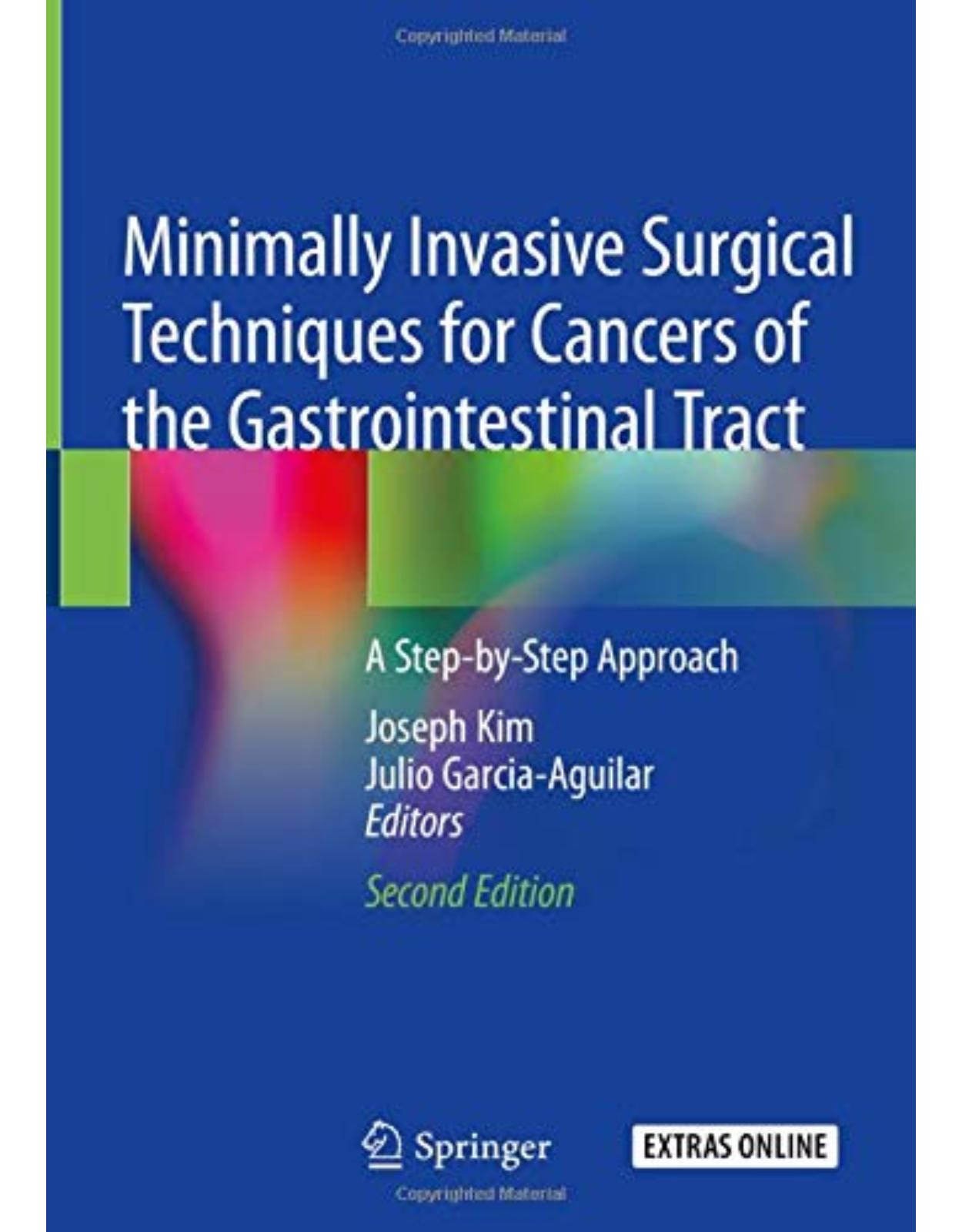
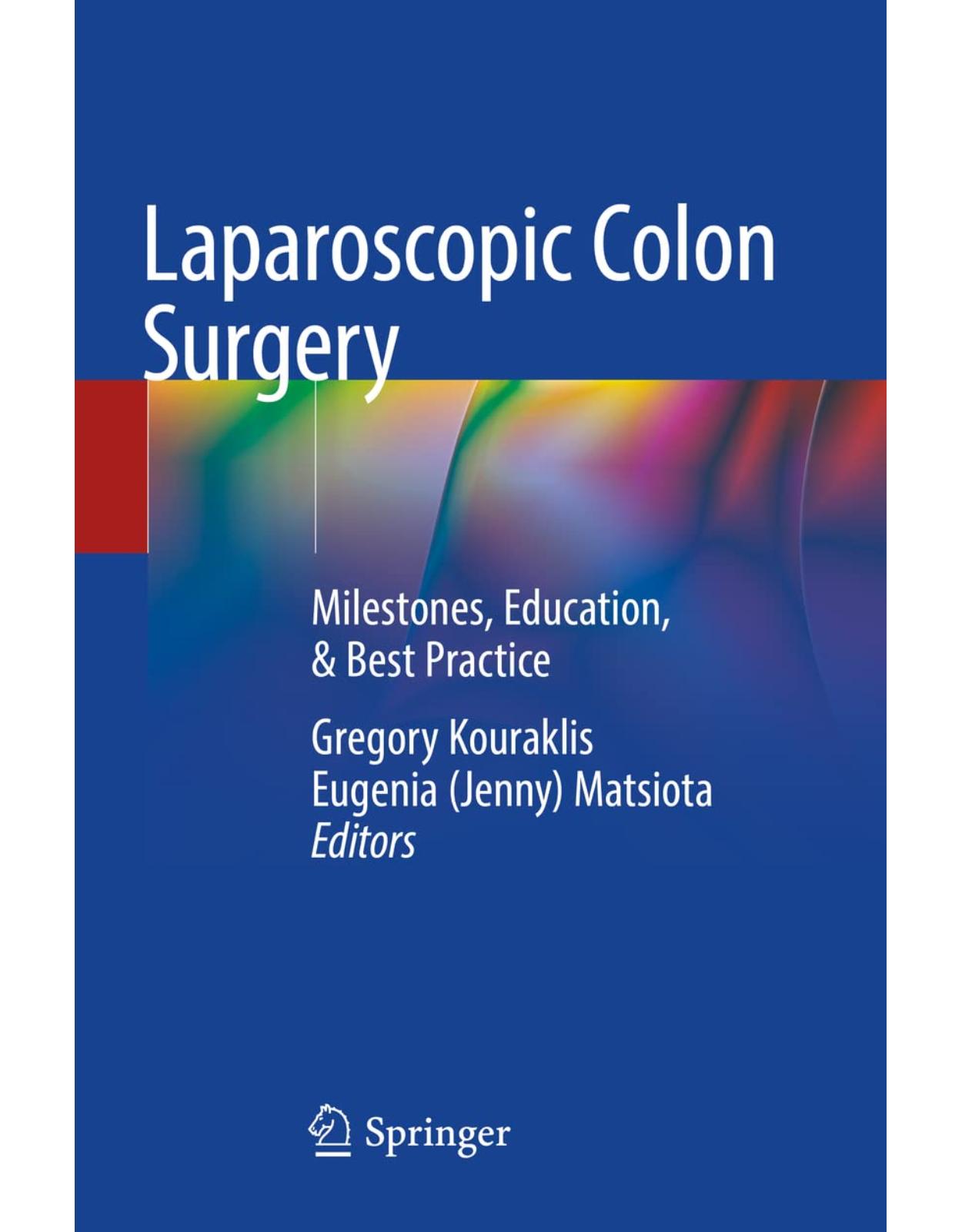
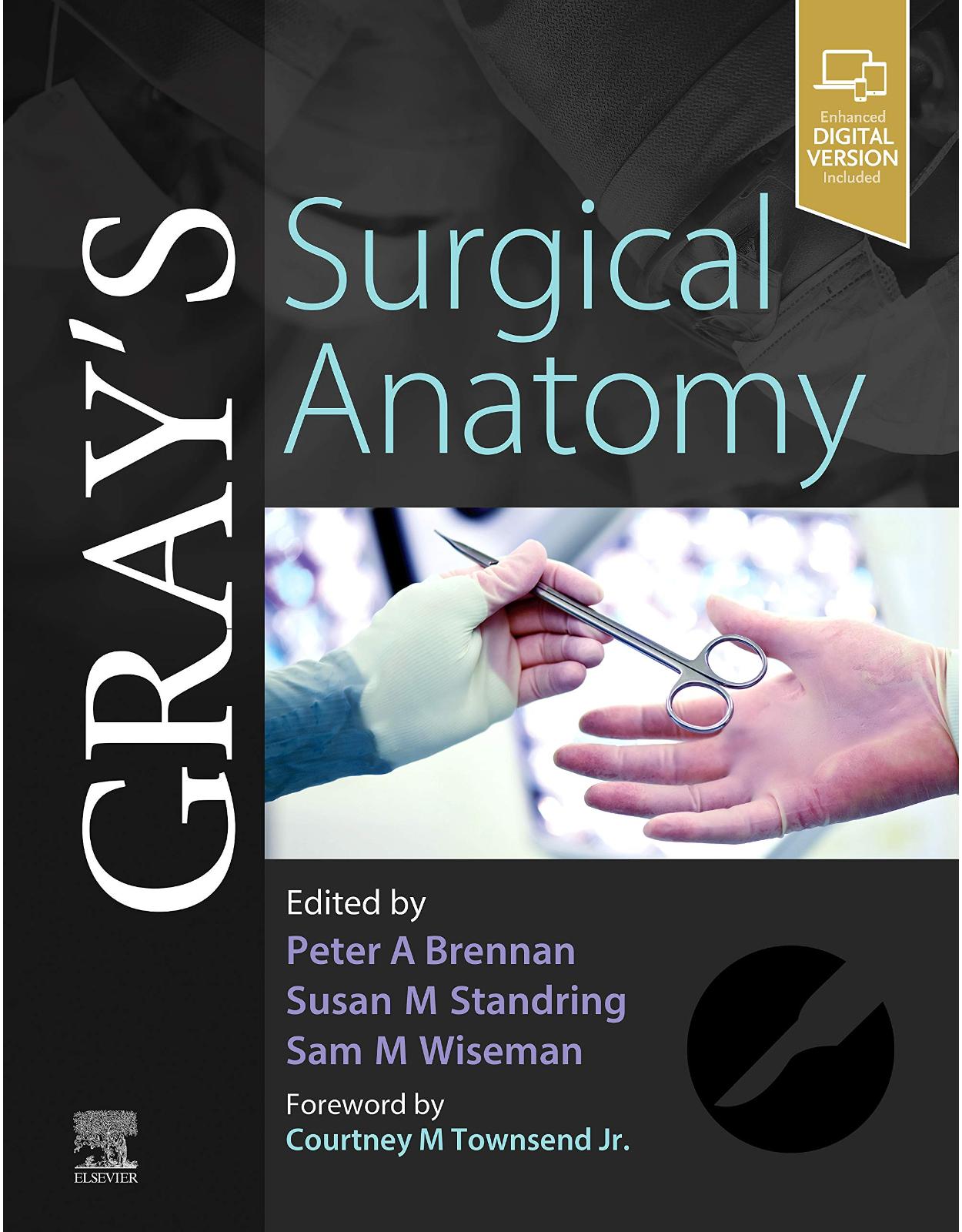
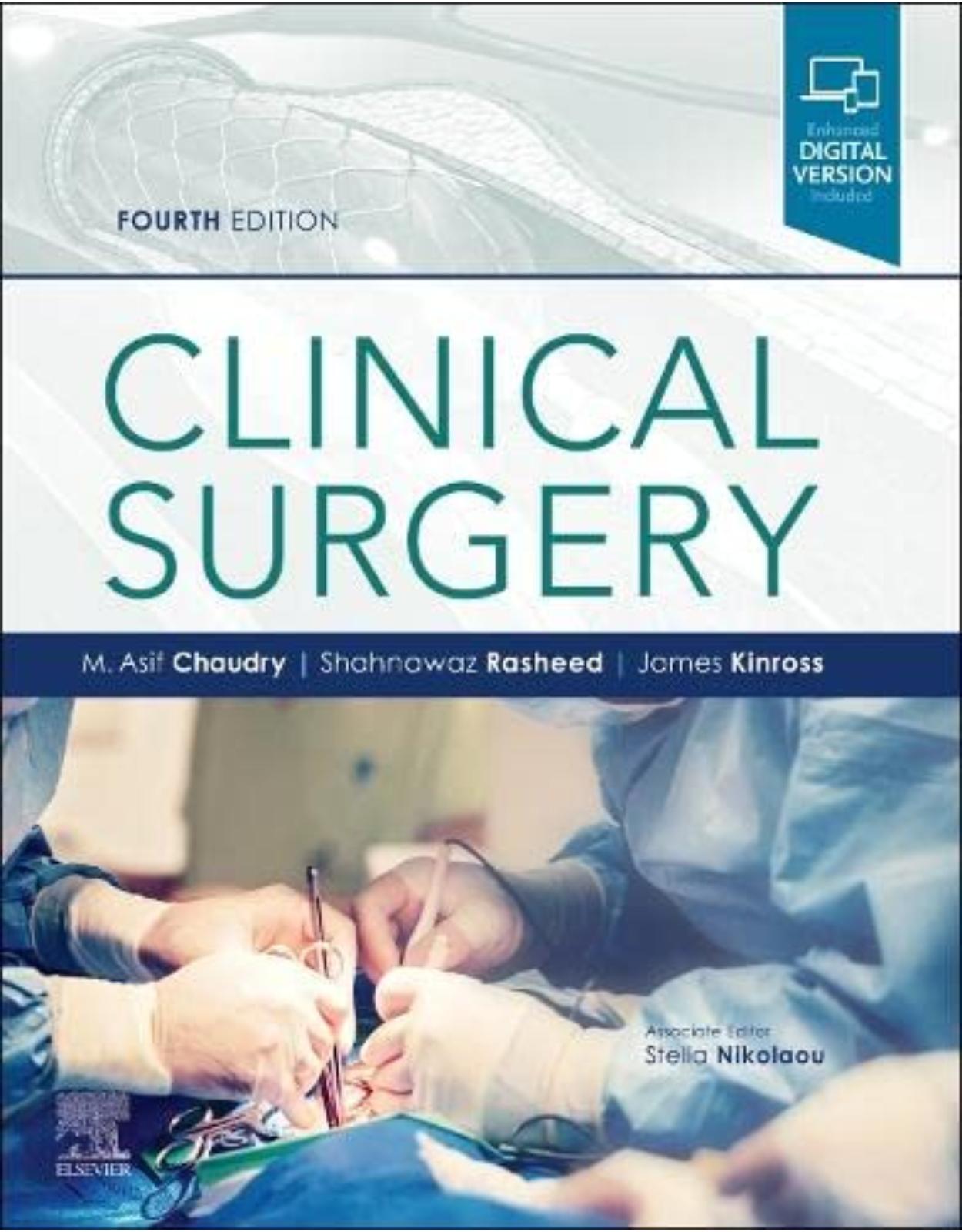
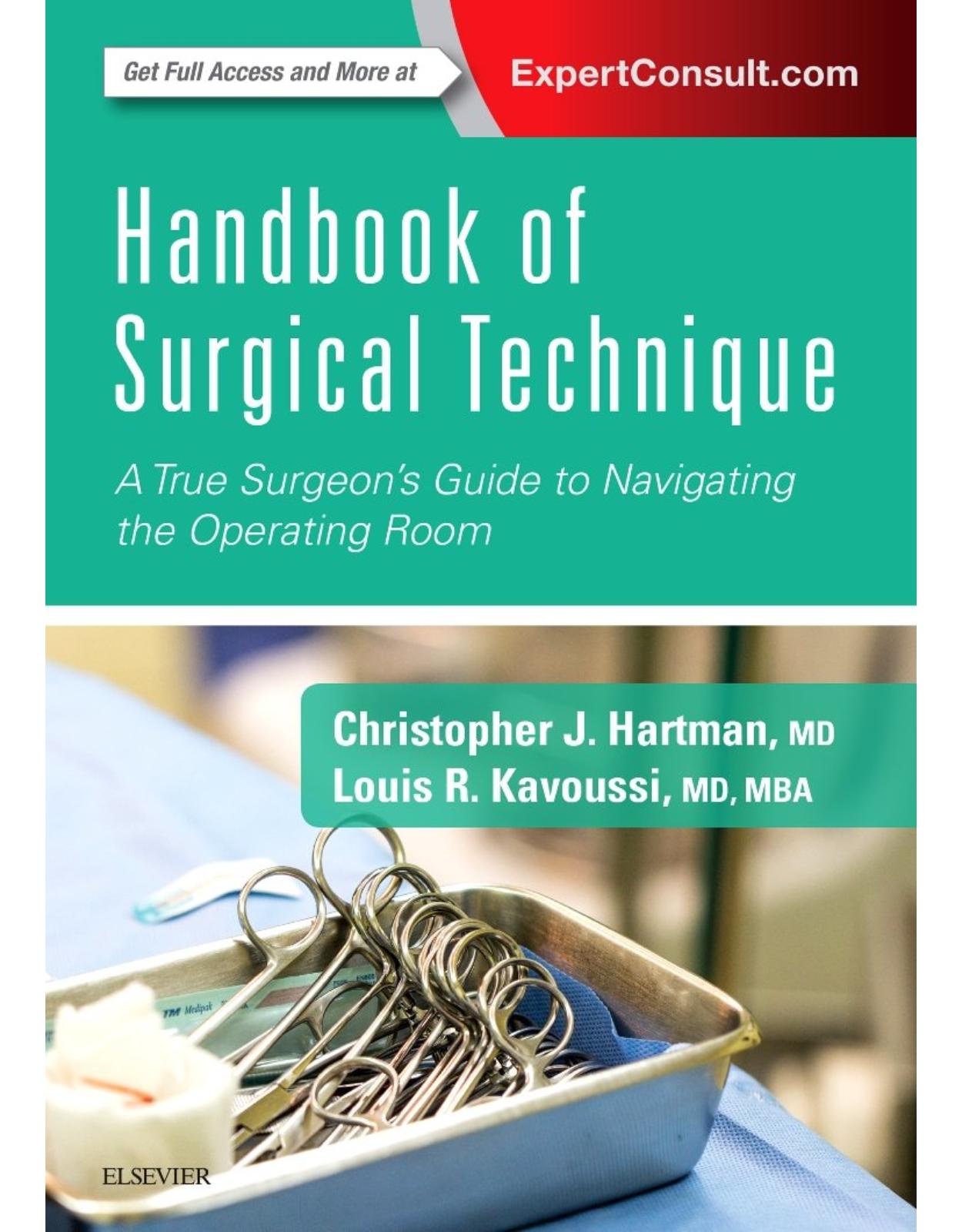
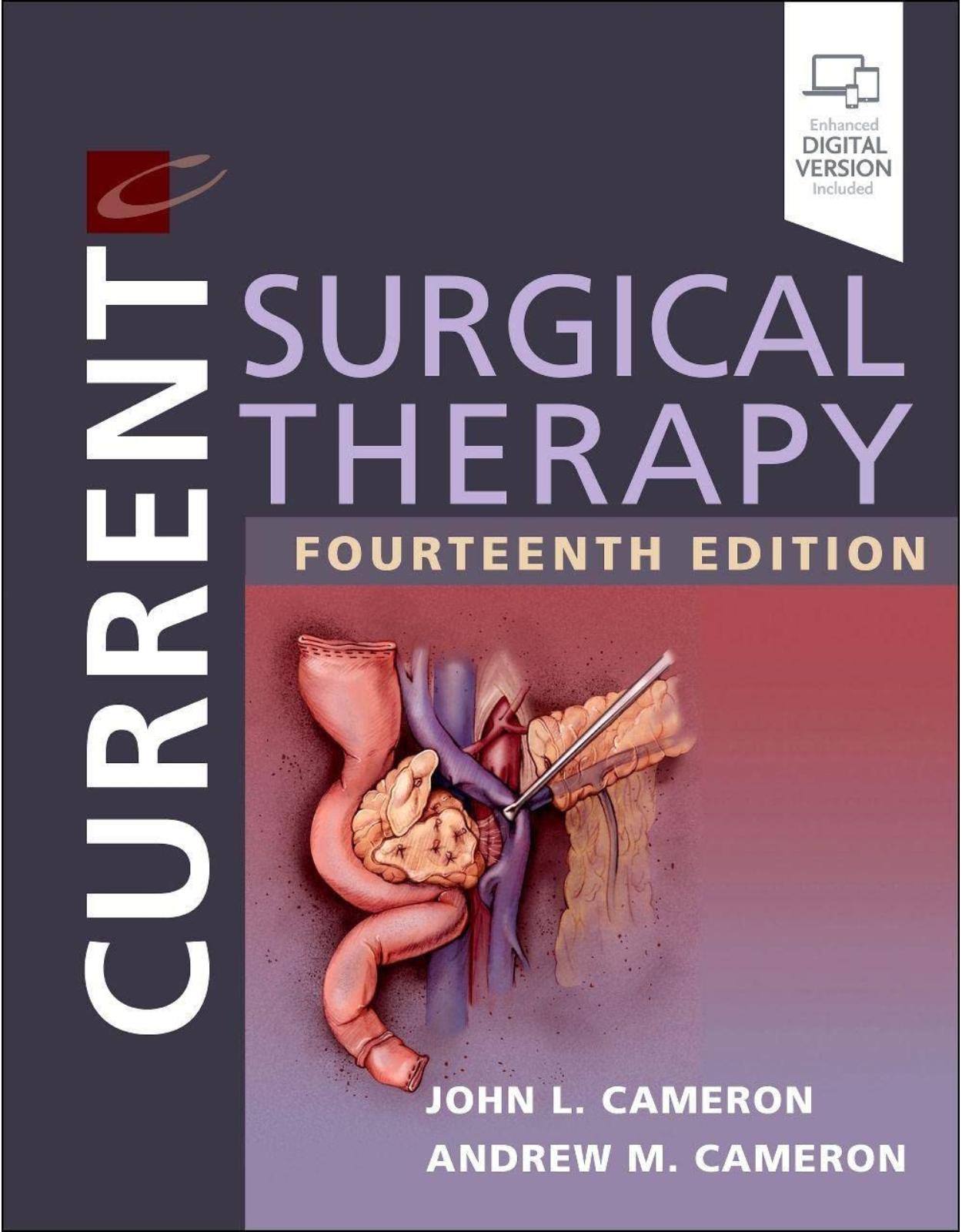
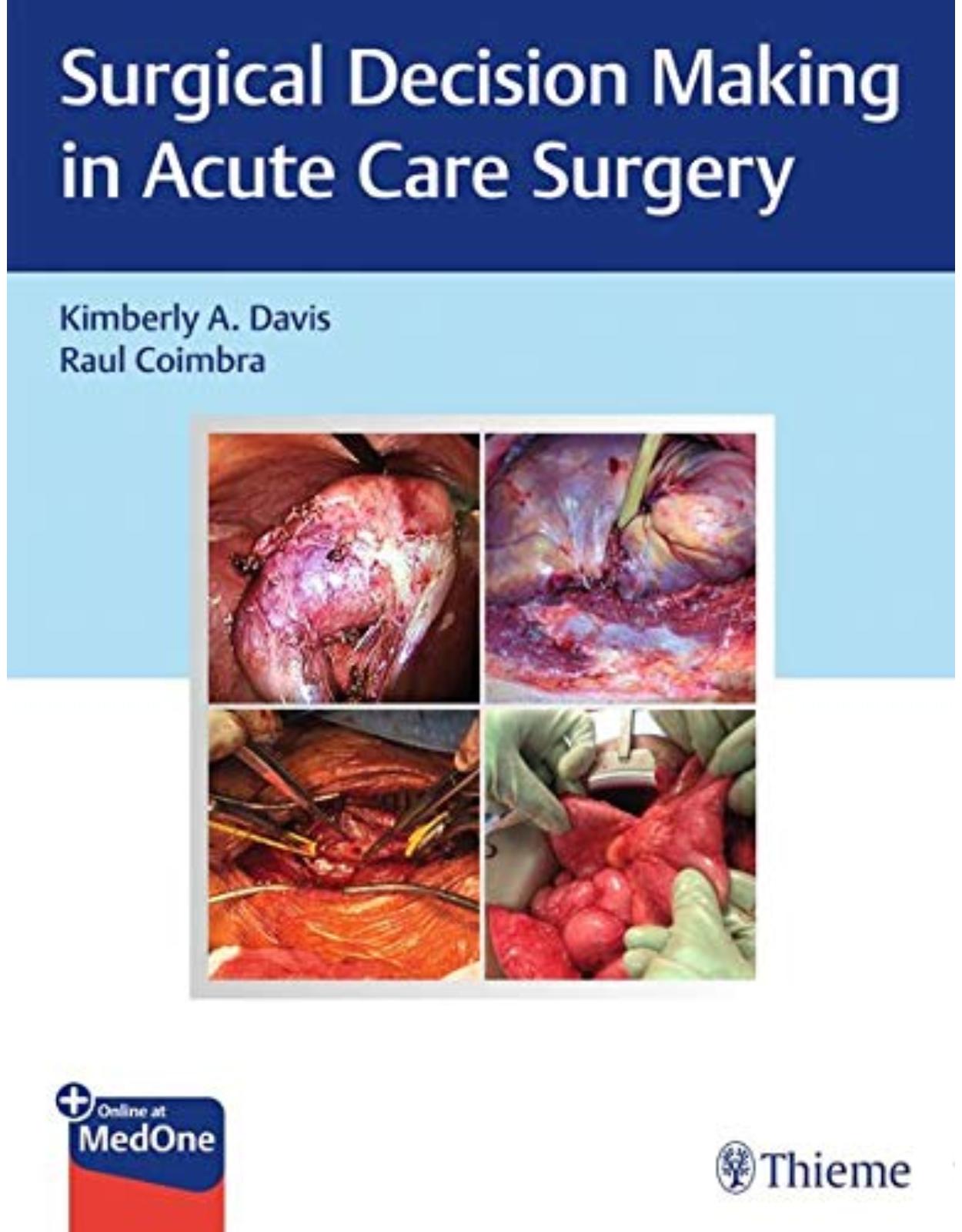
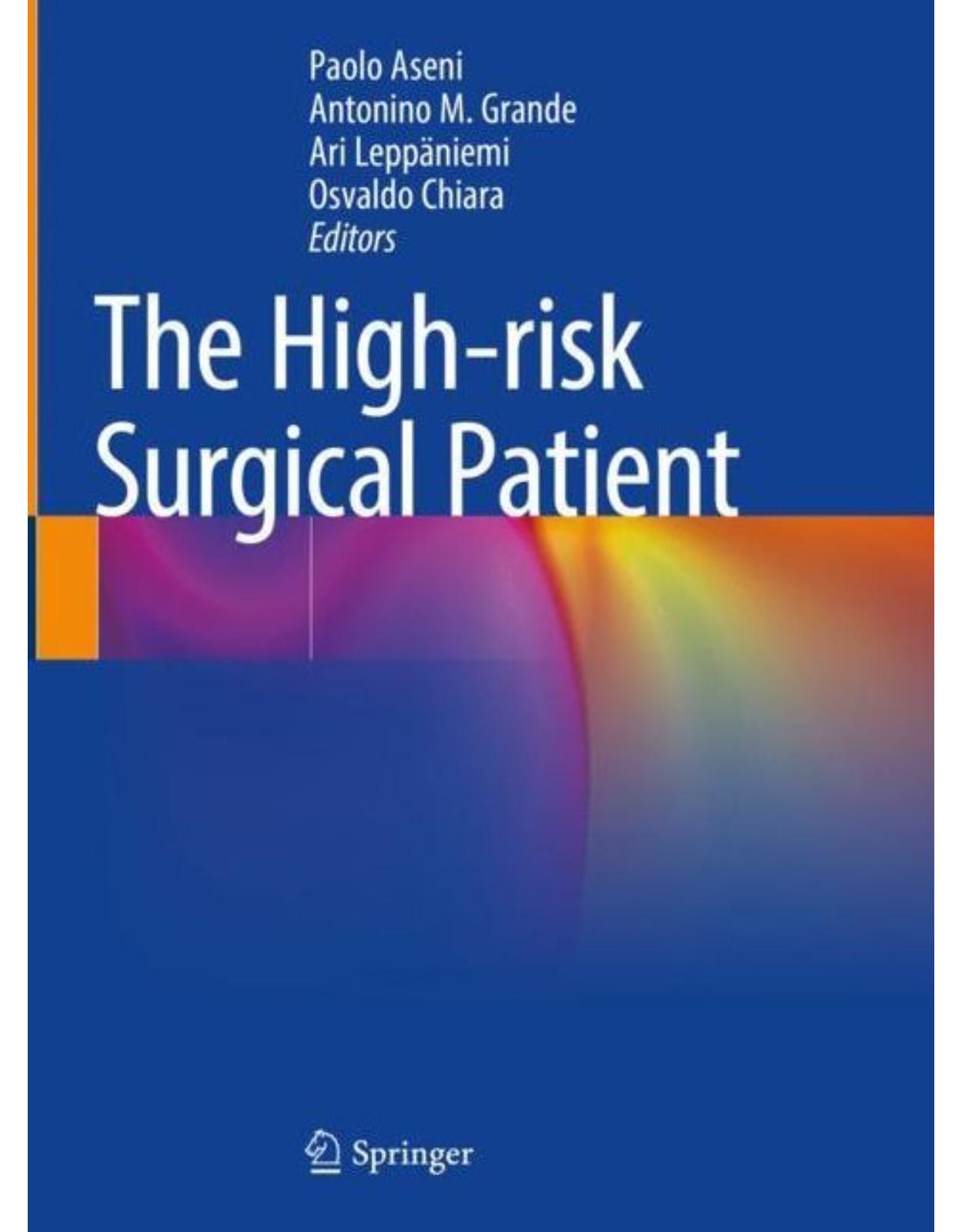
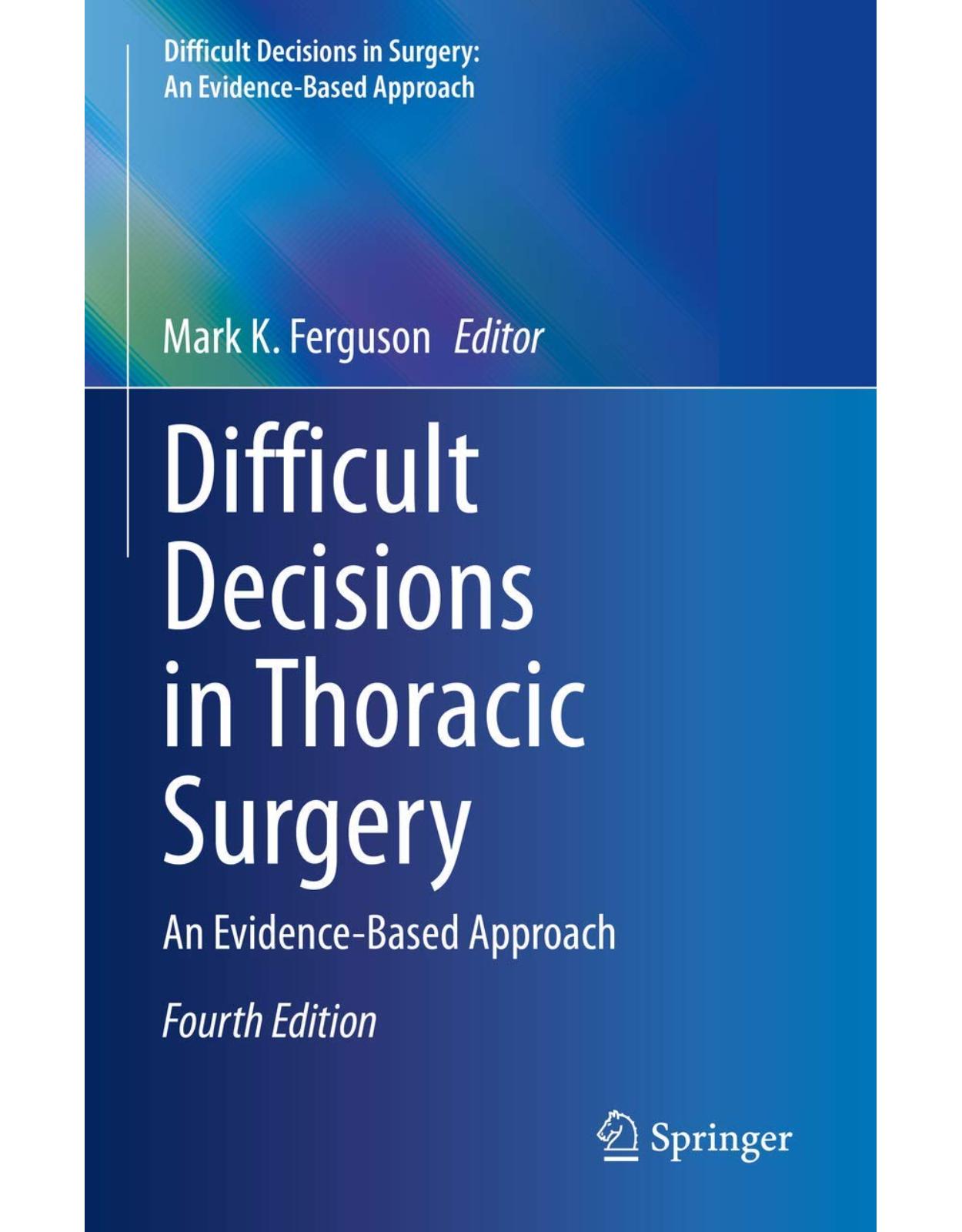
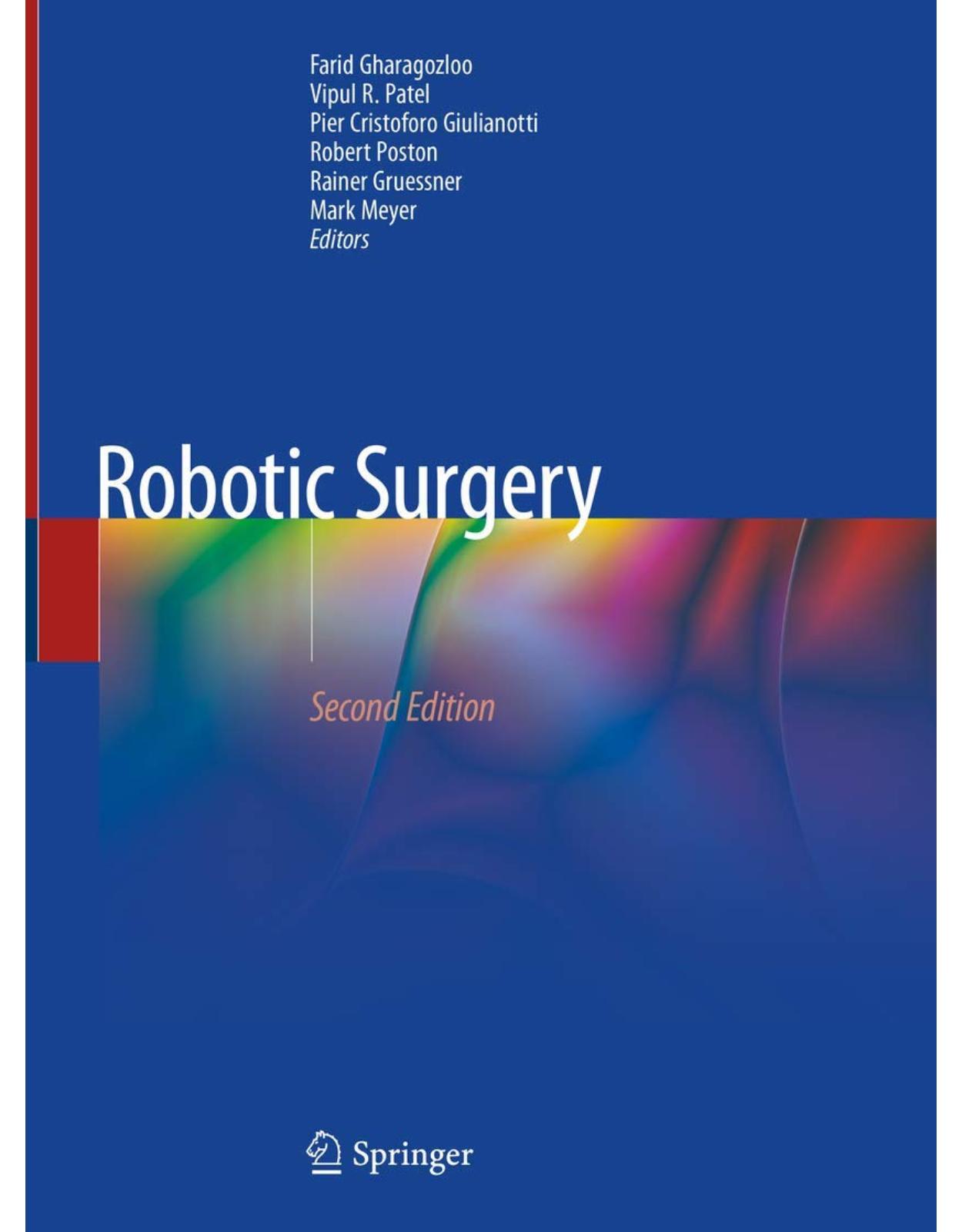
Clientii ebookshop.ro nu au adaugat inca opinii pentru acest produs. Fii primul care adauga o parere, folosind formularul de mai jos.